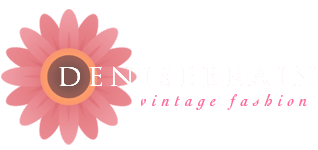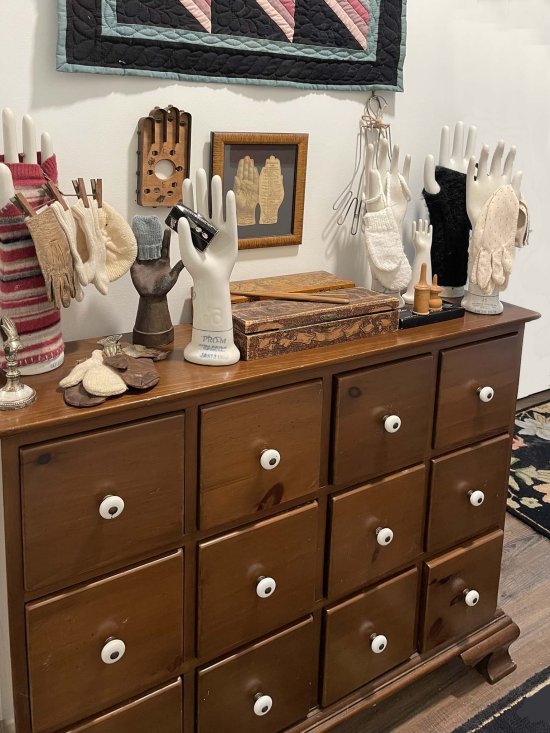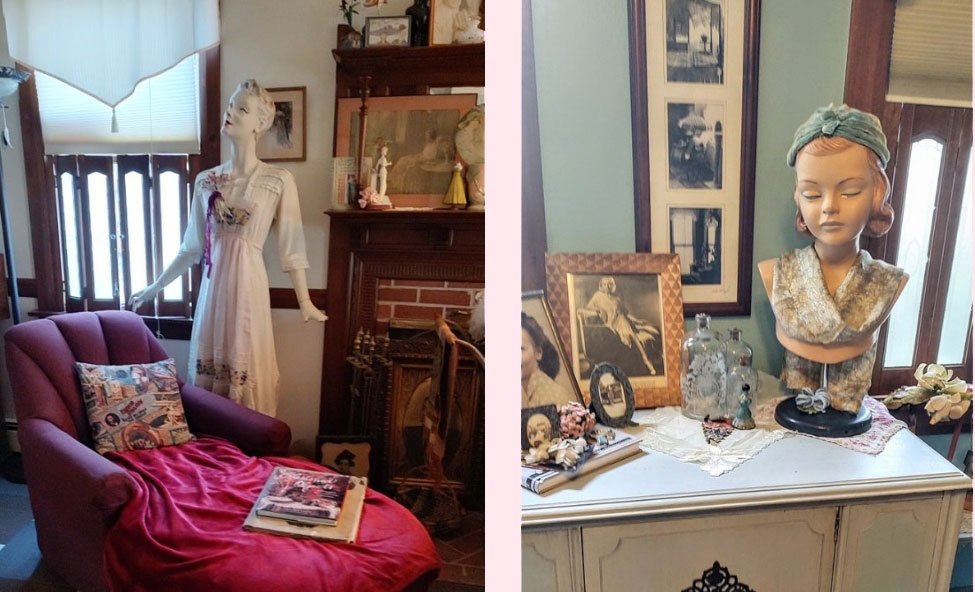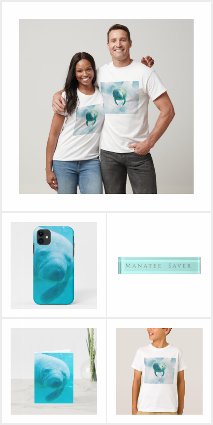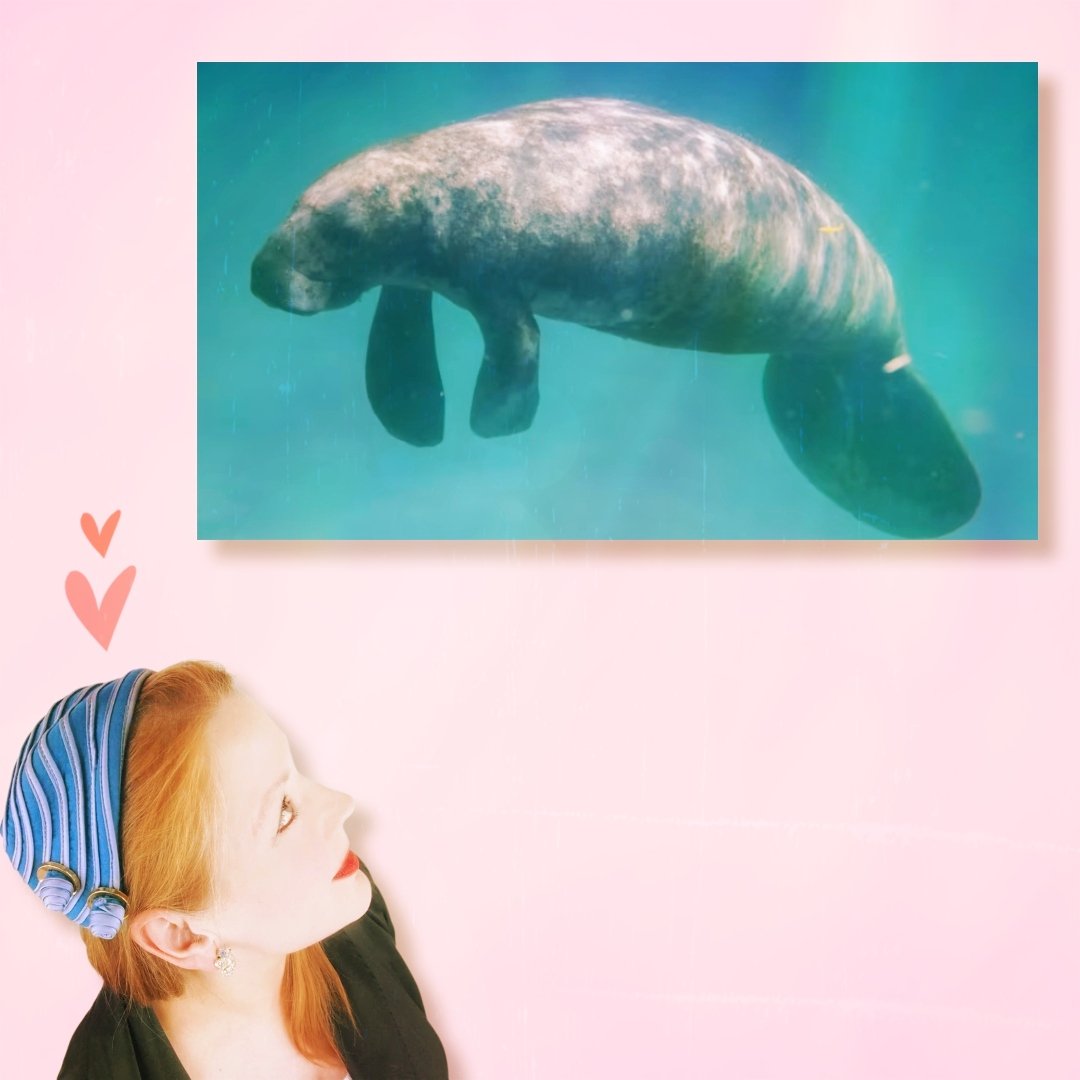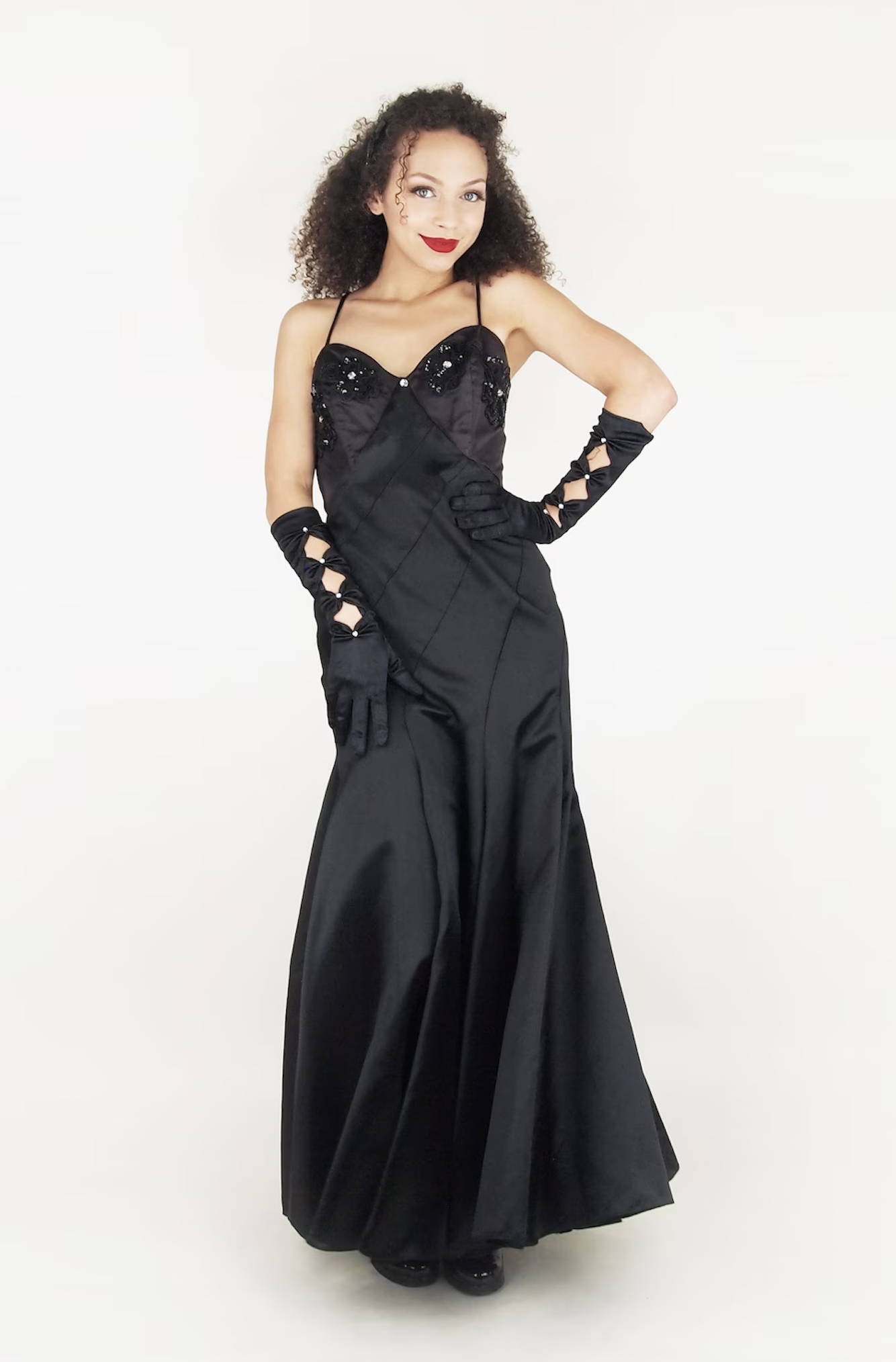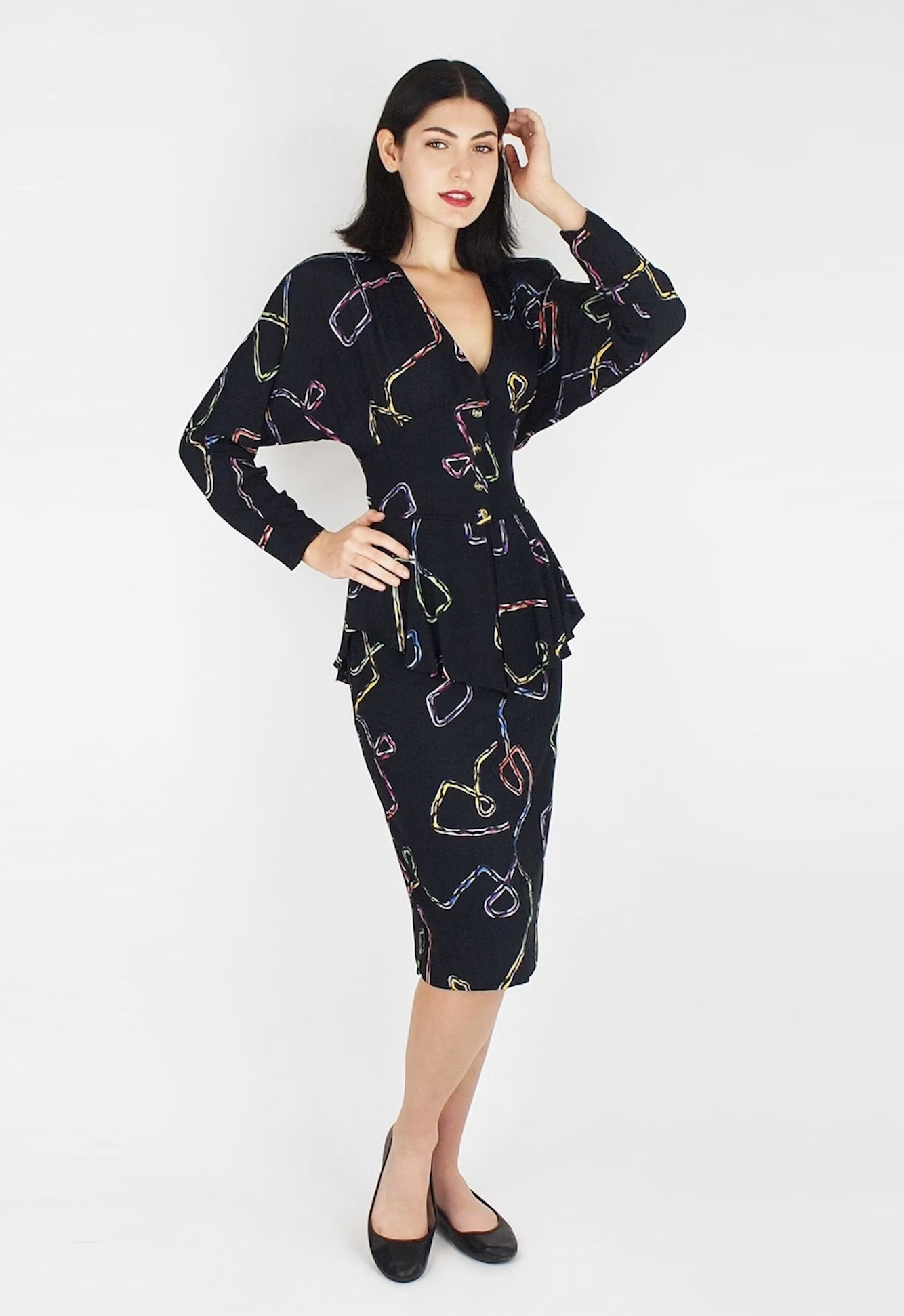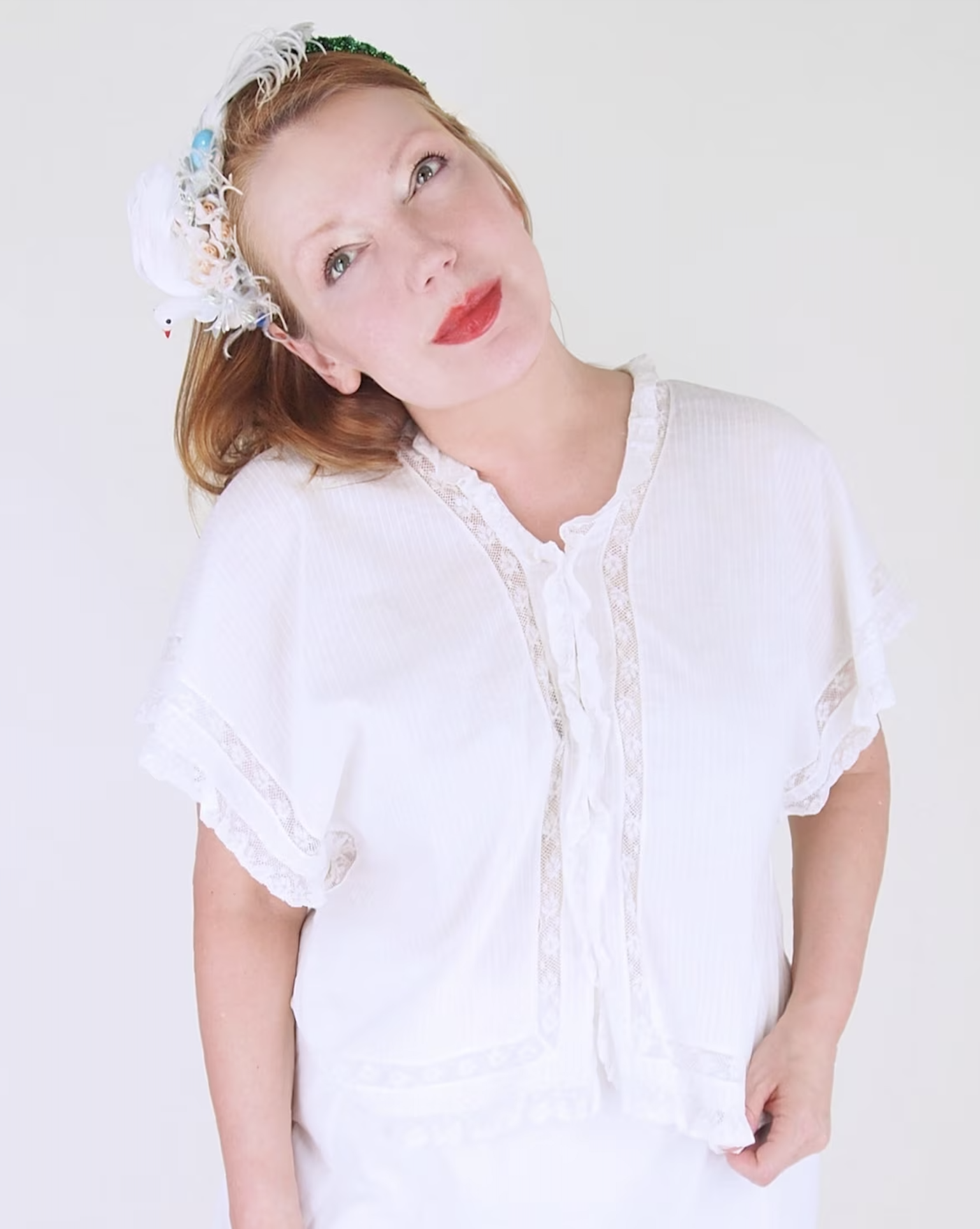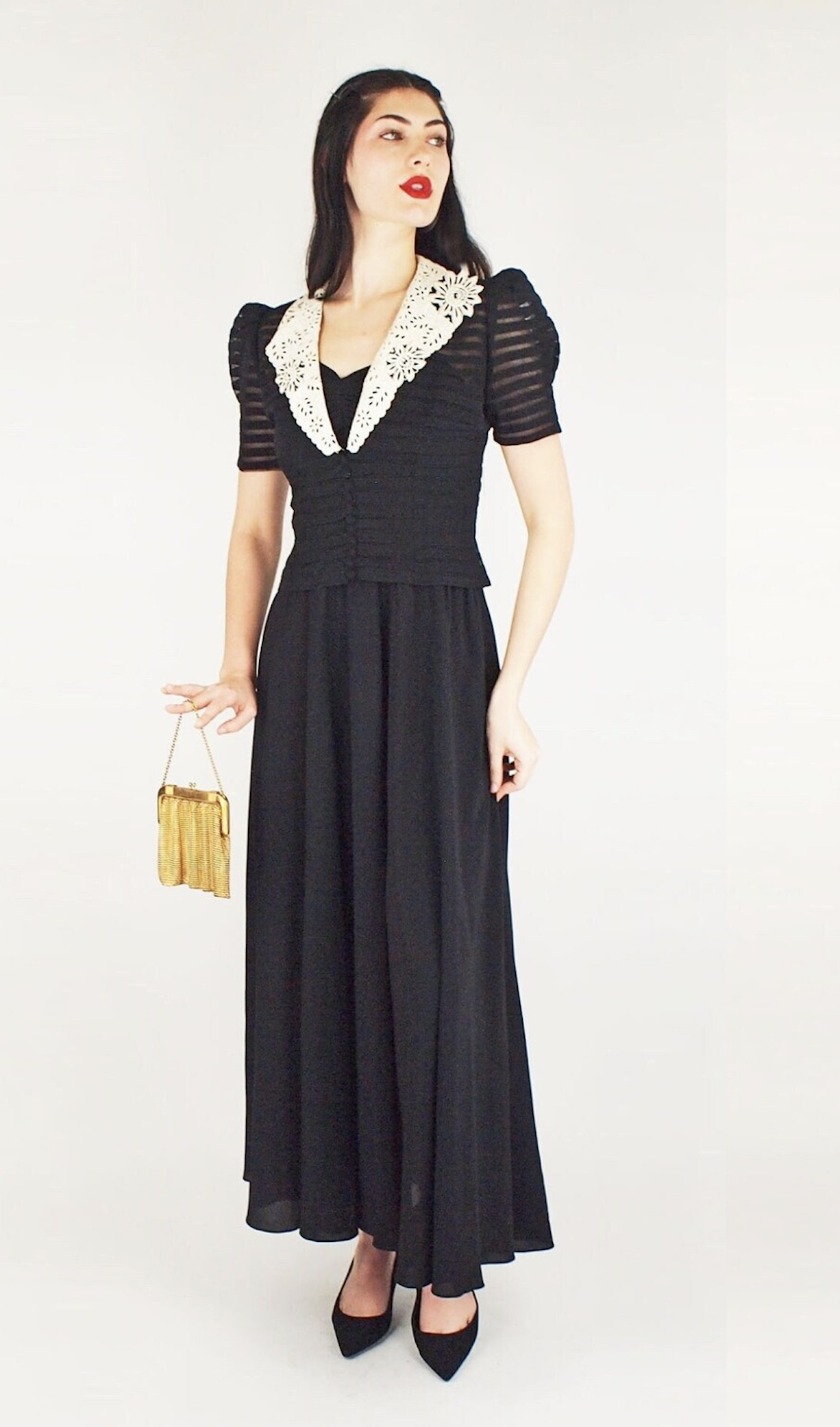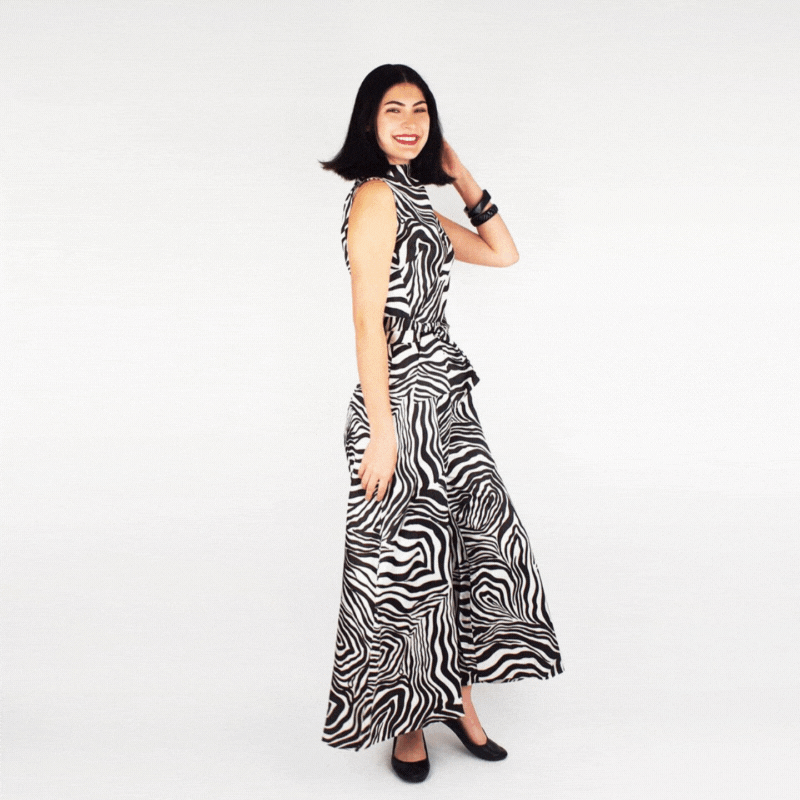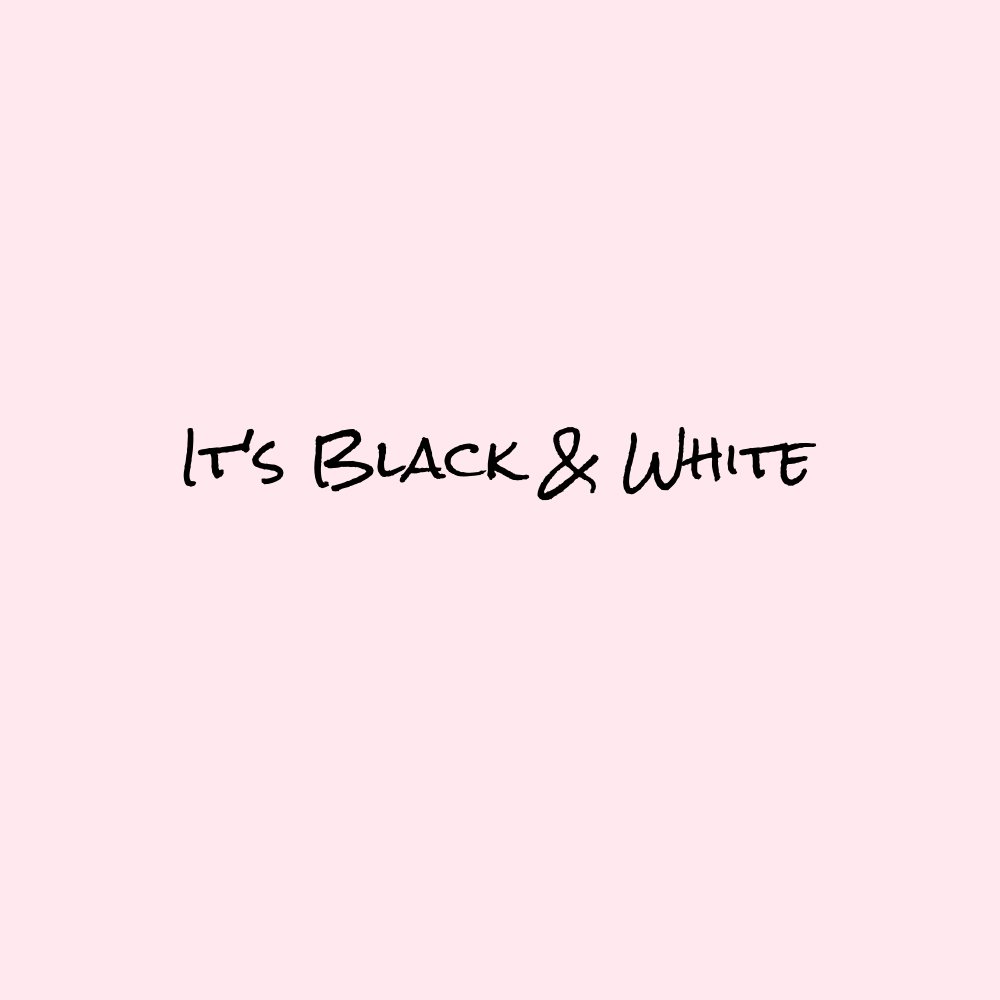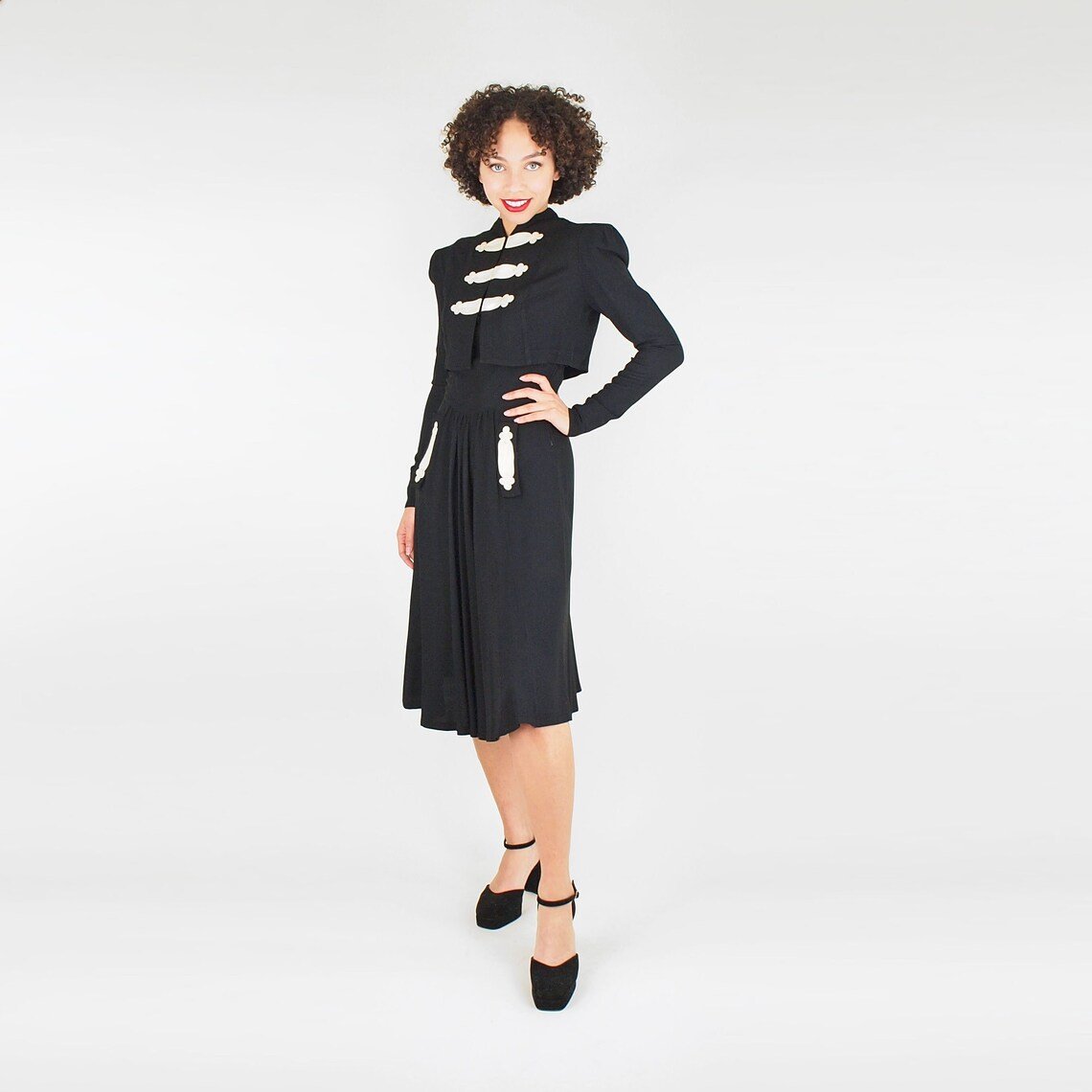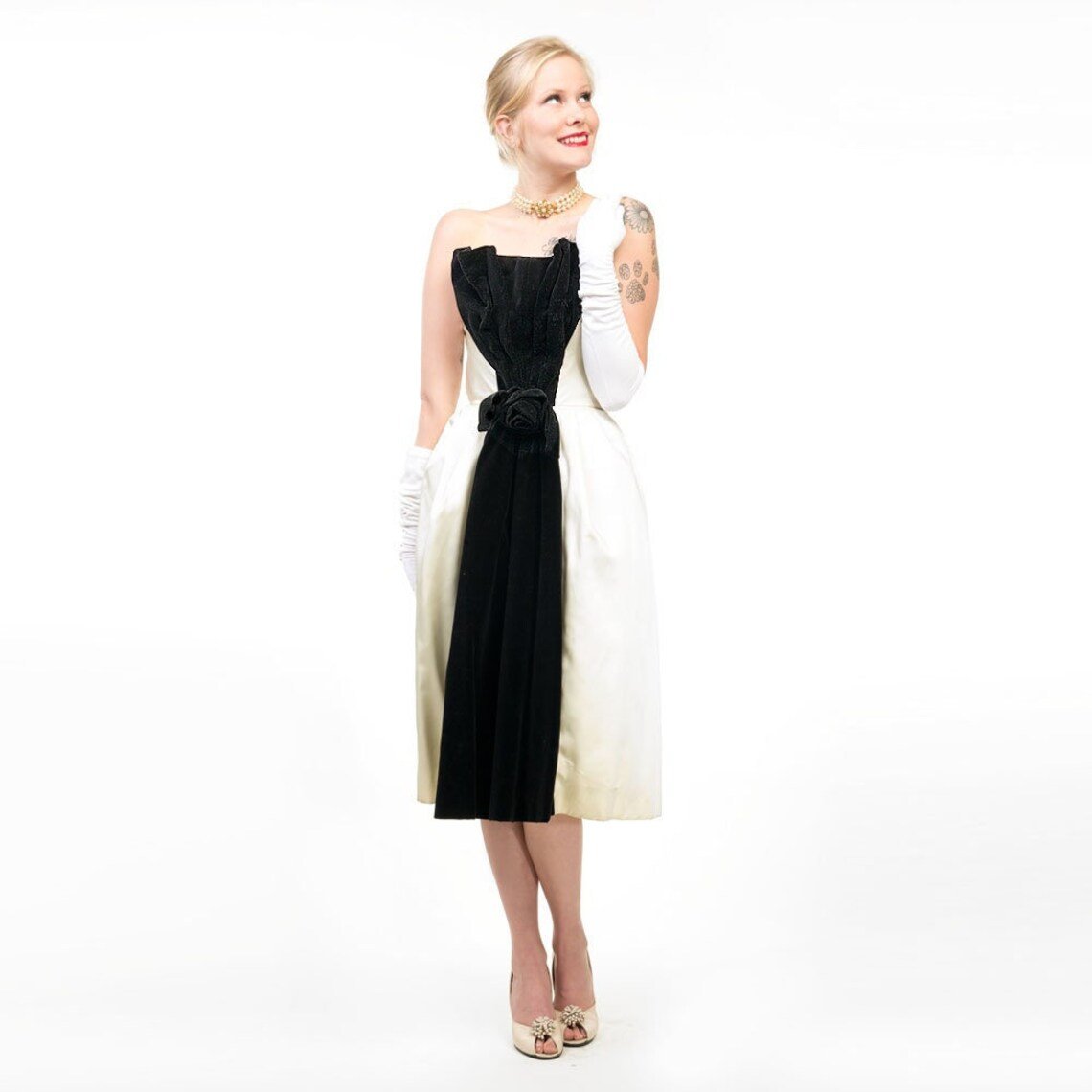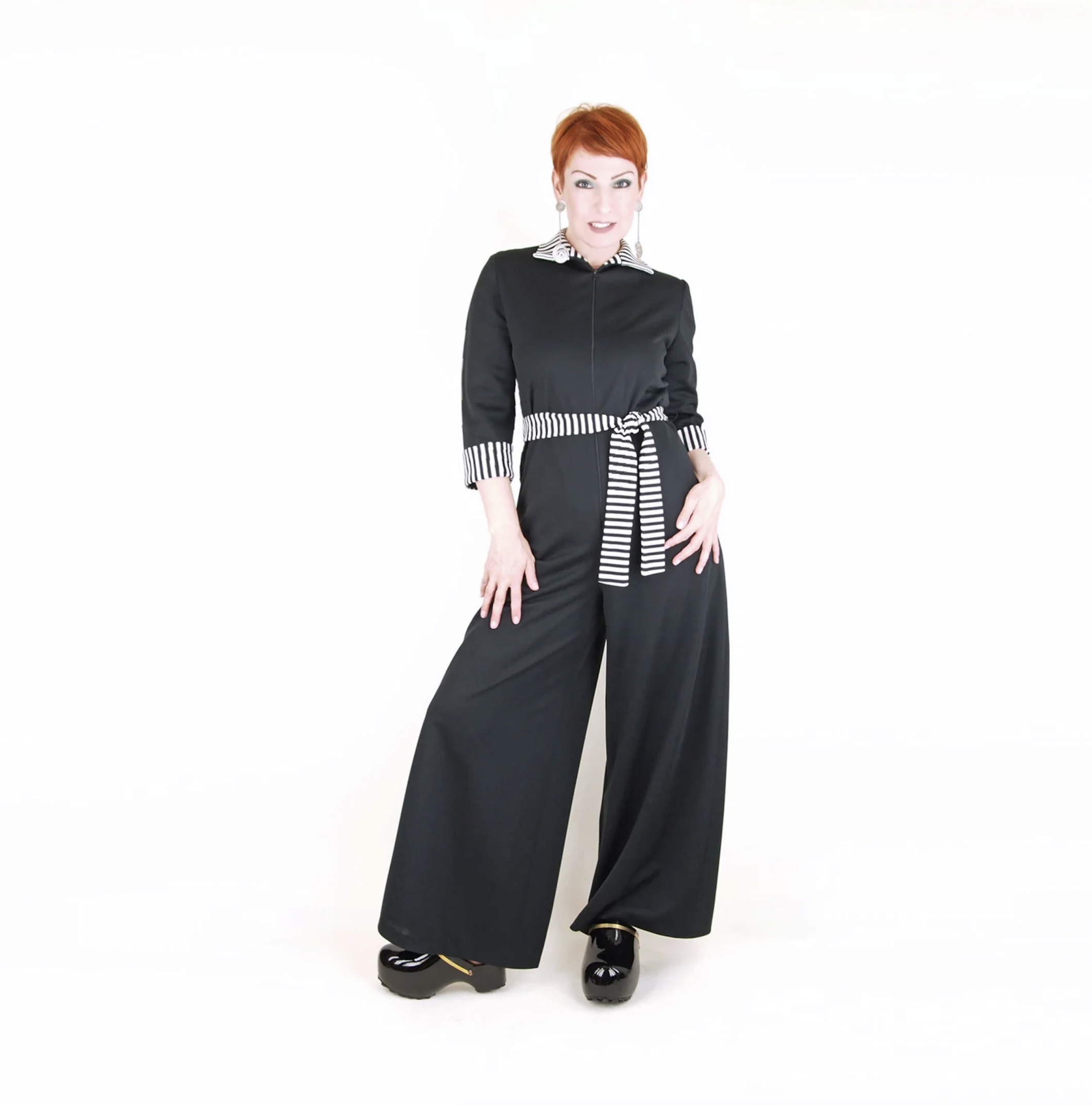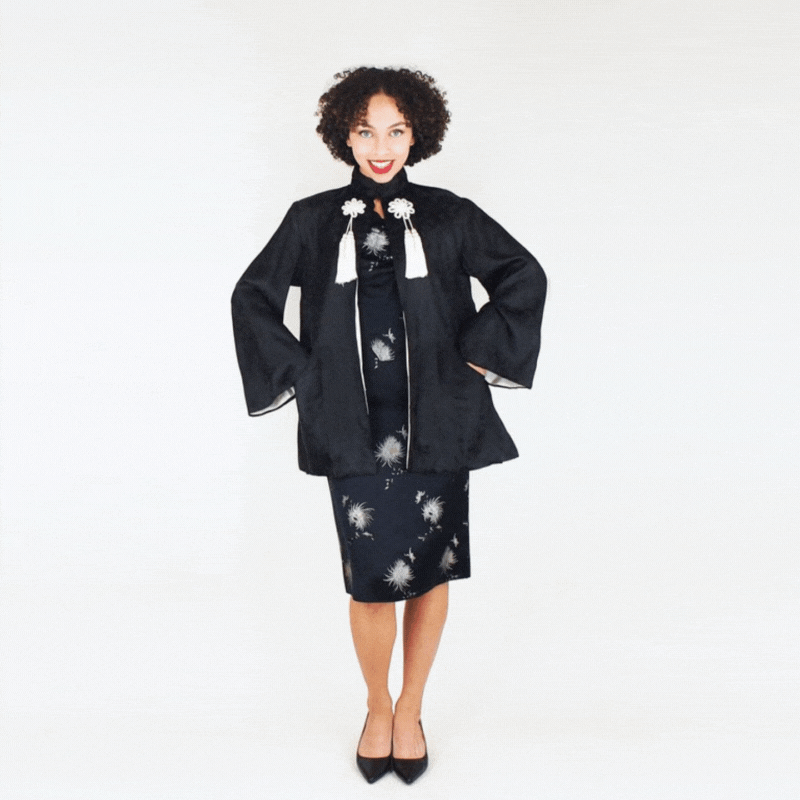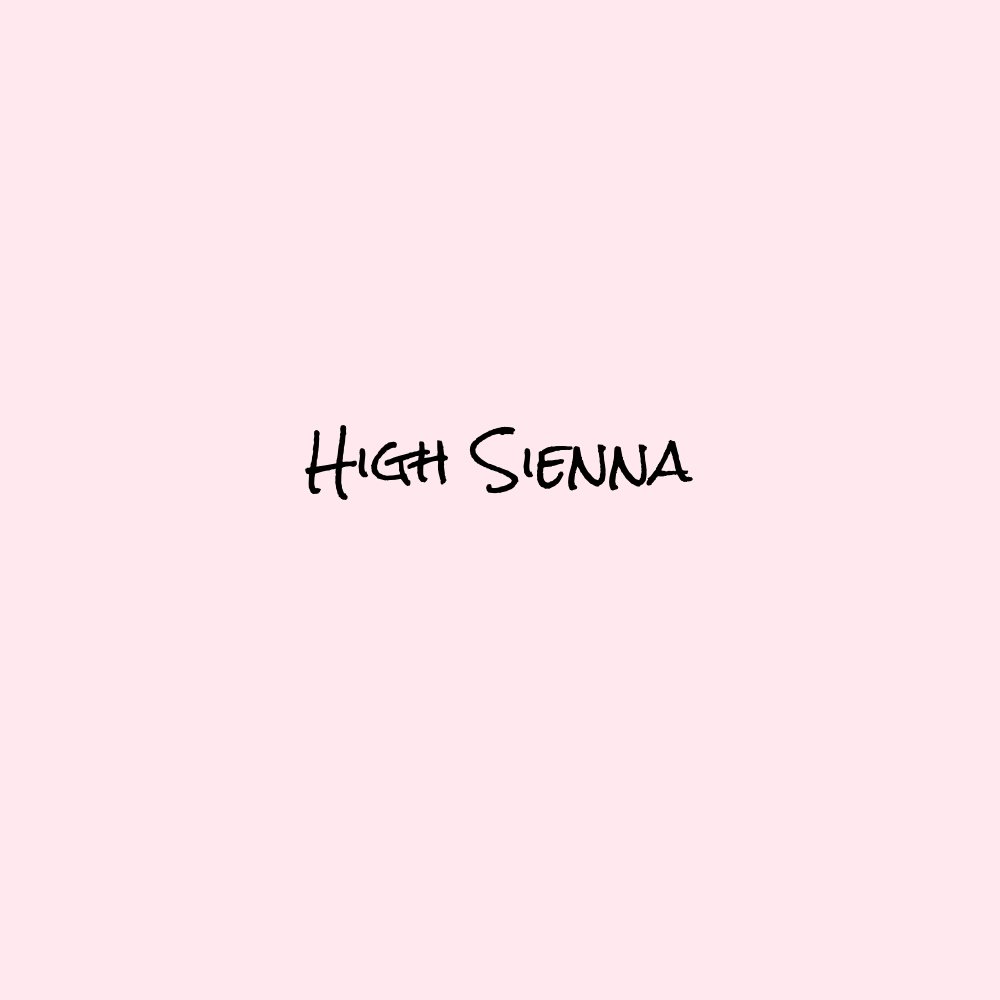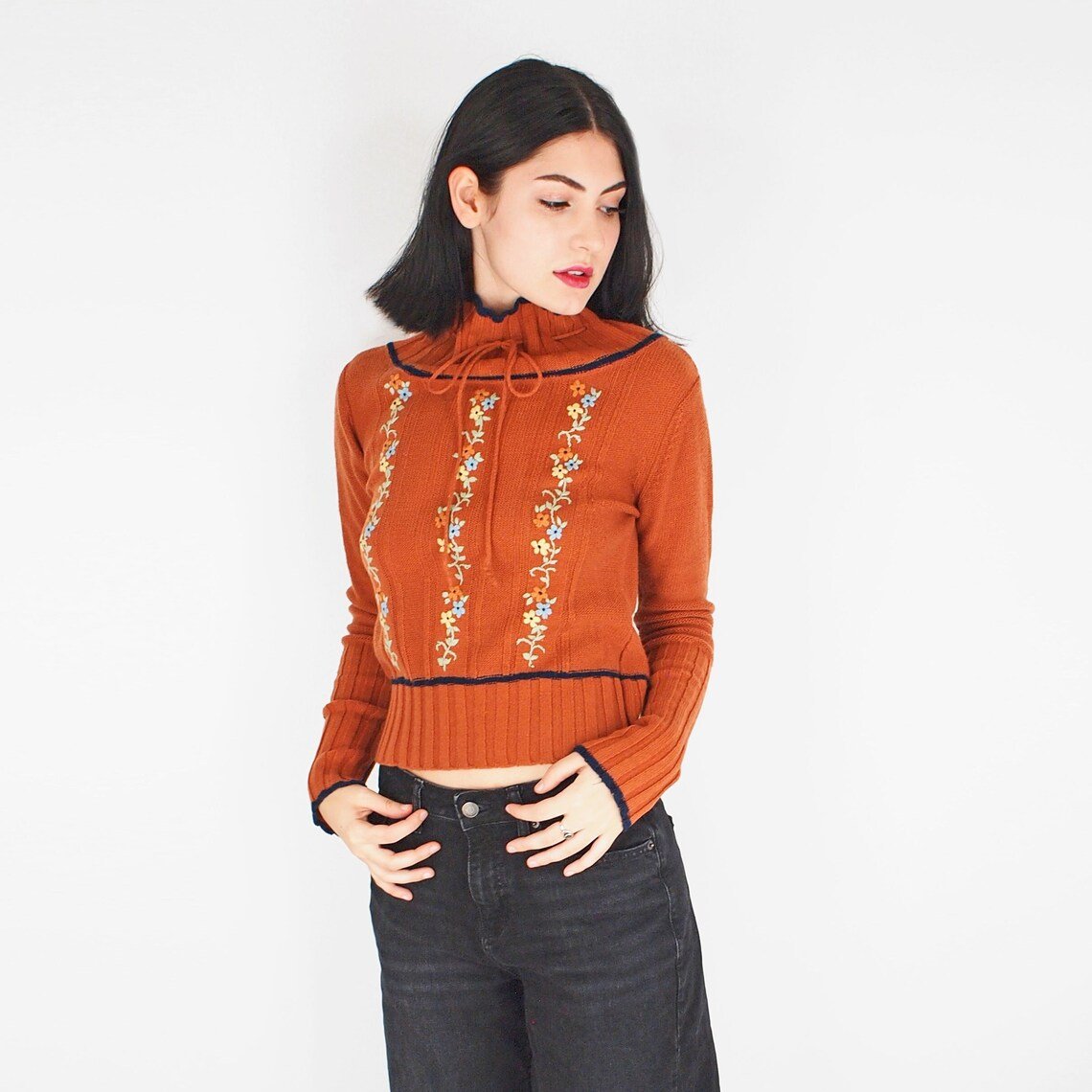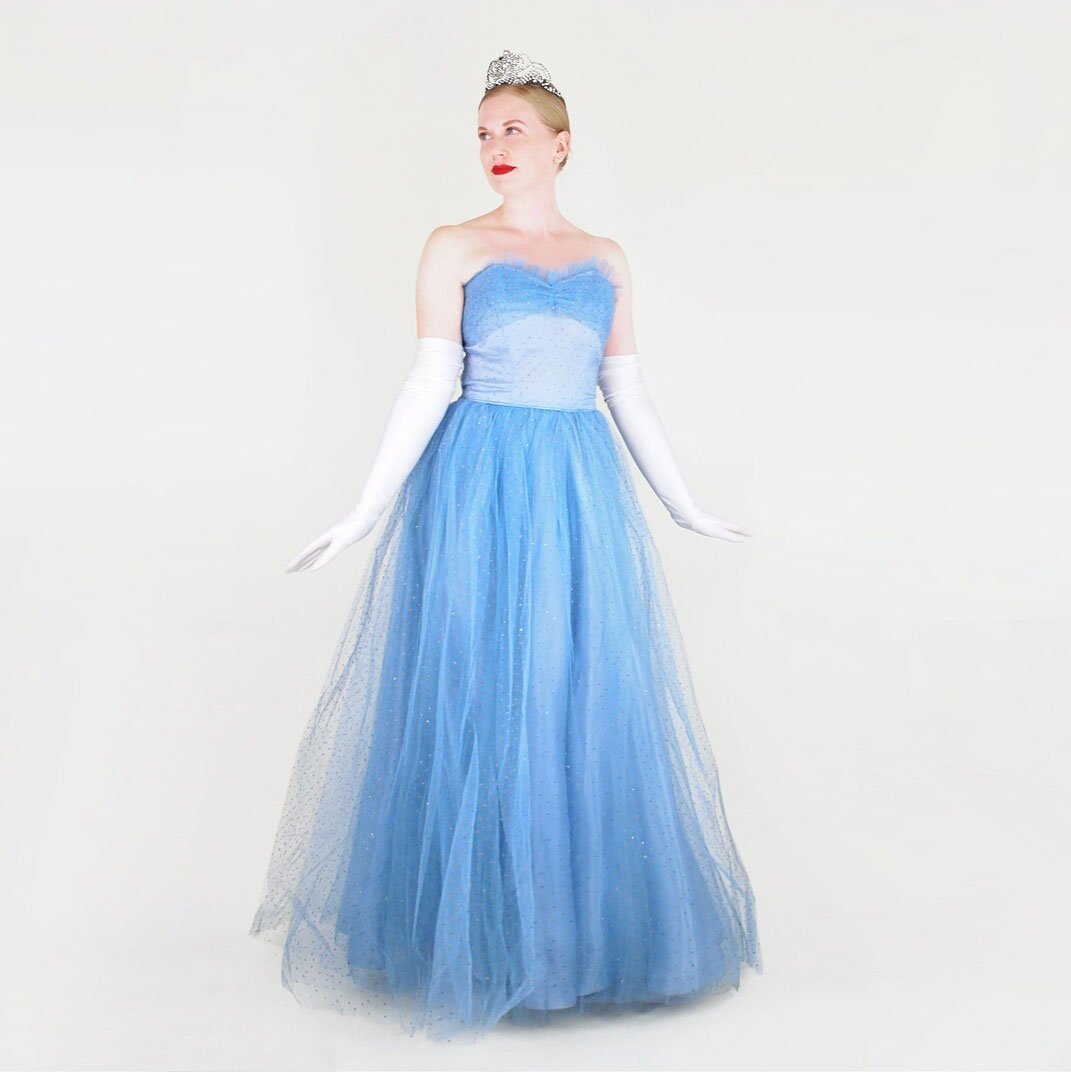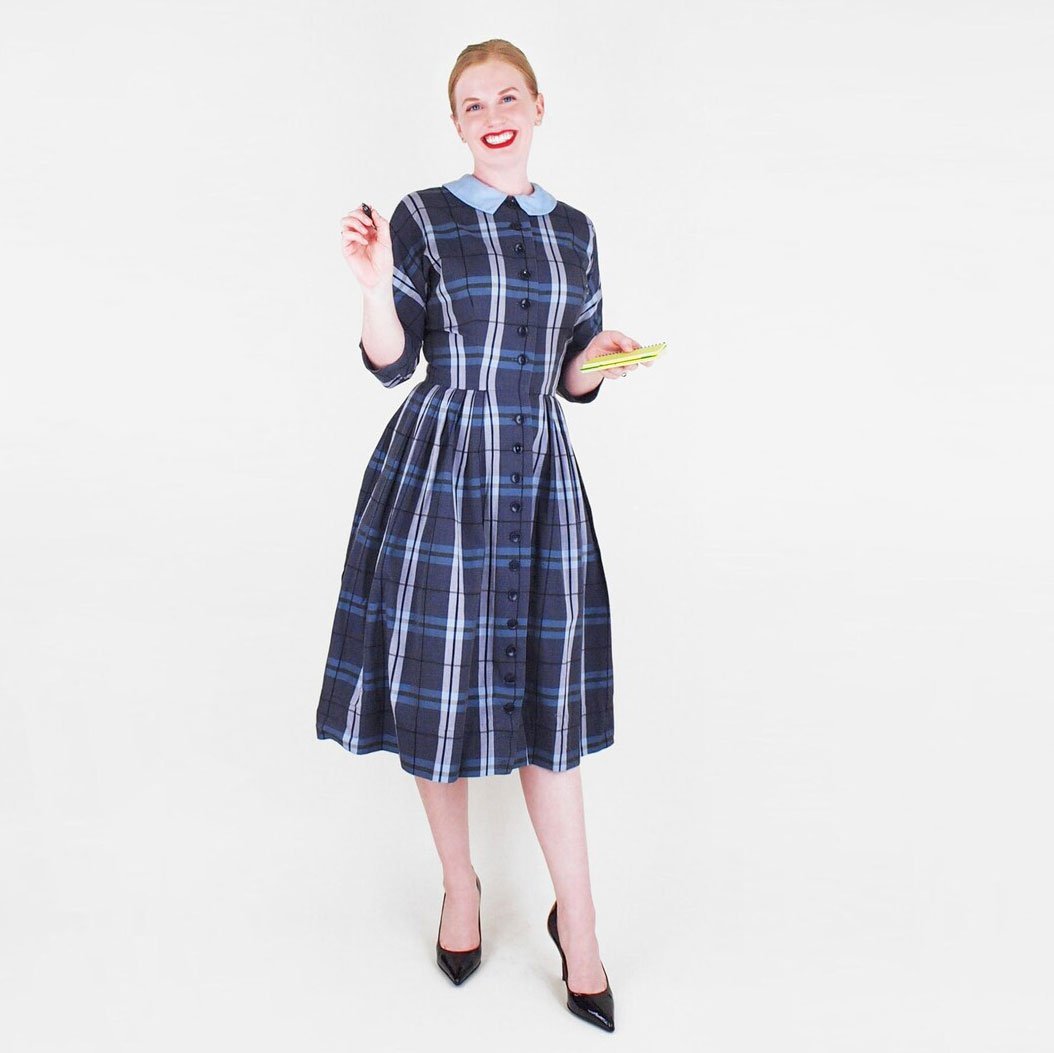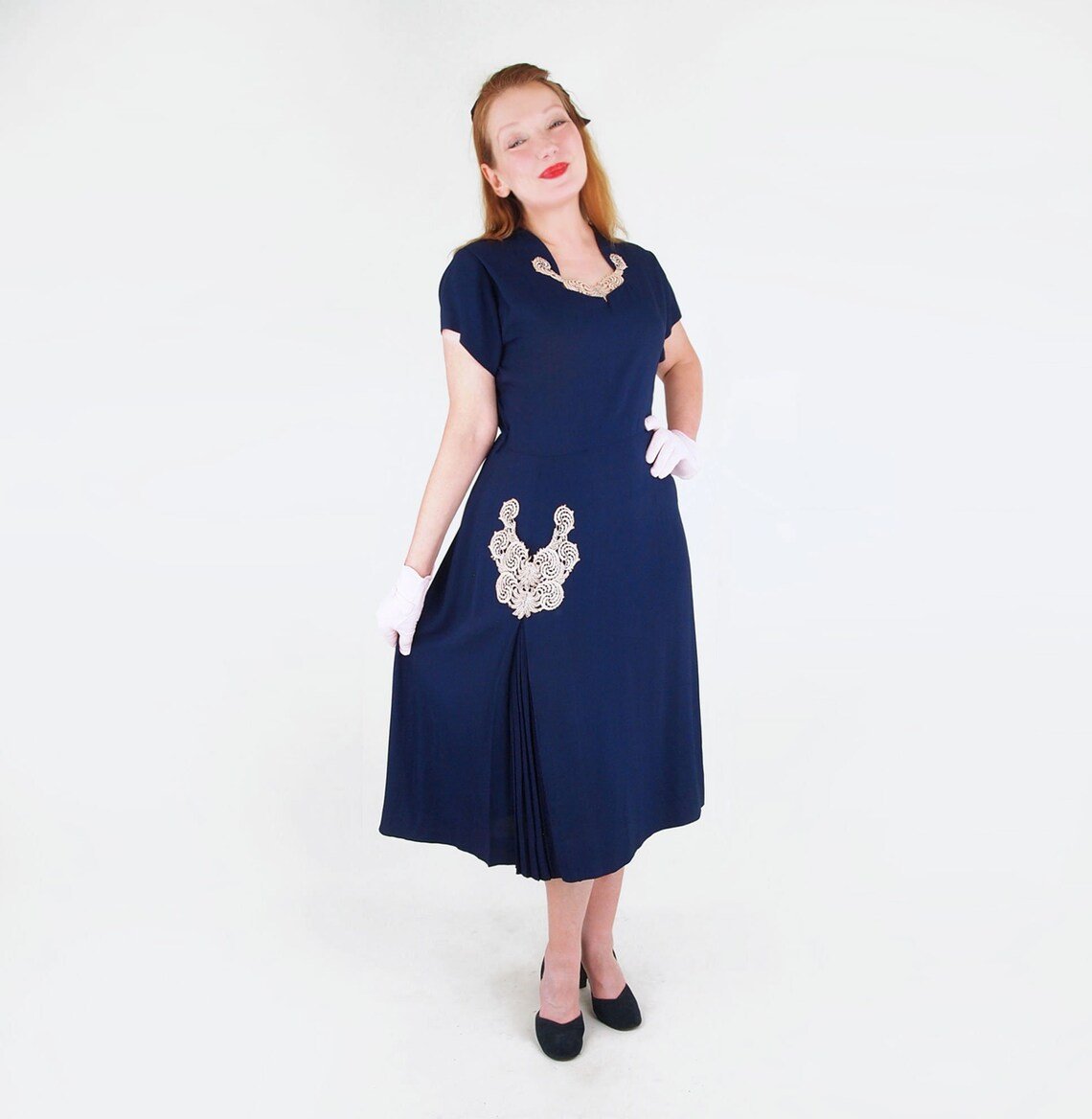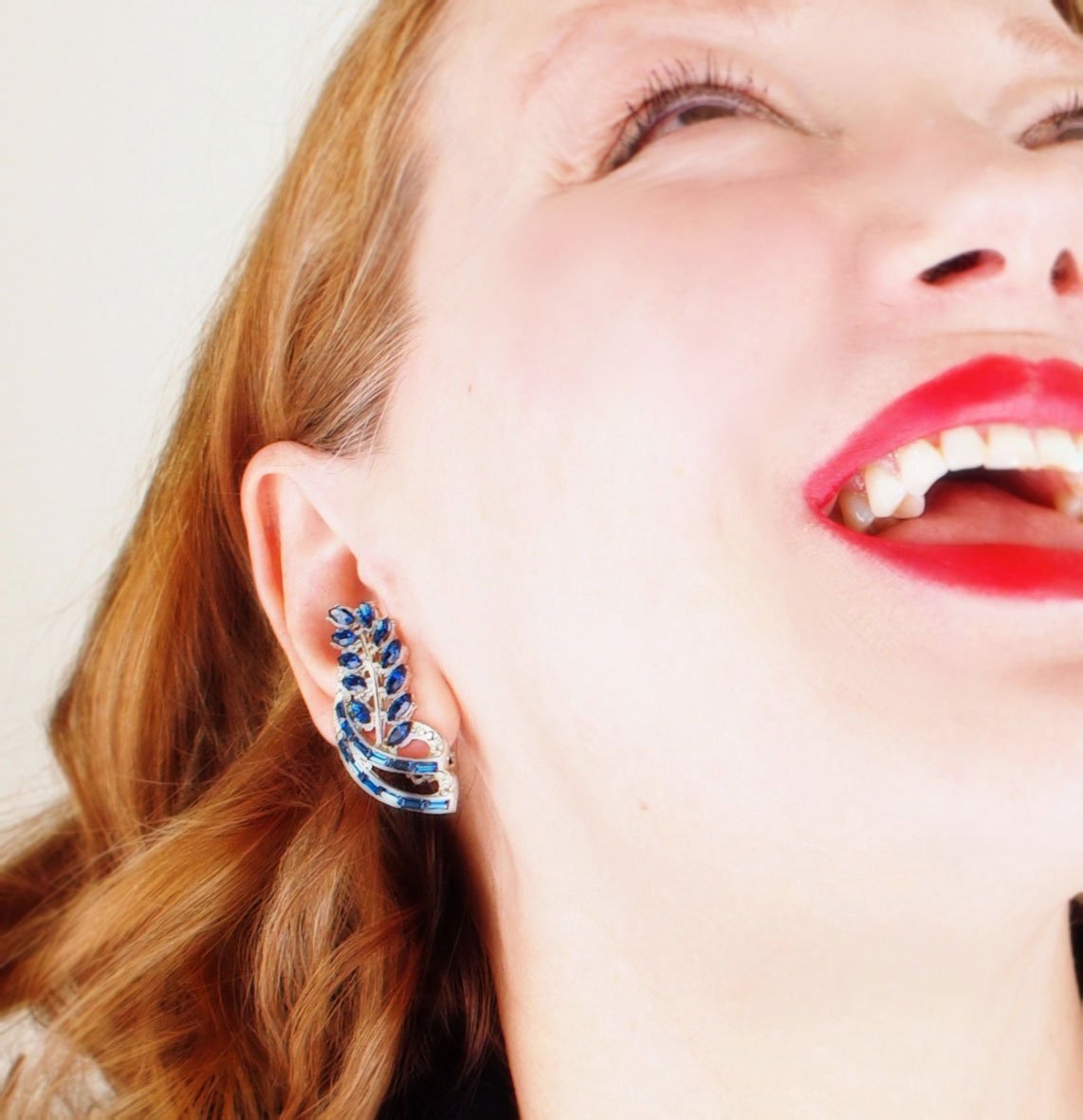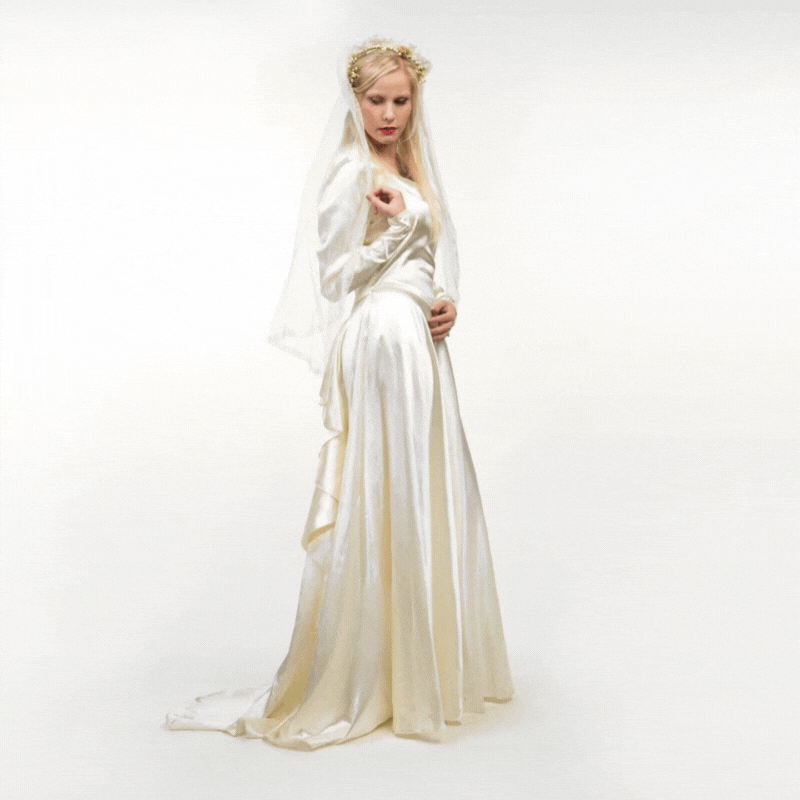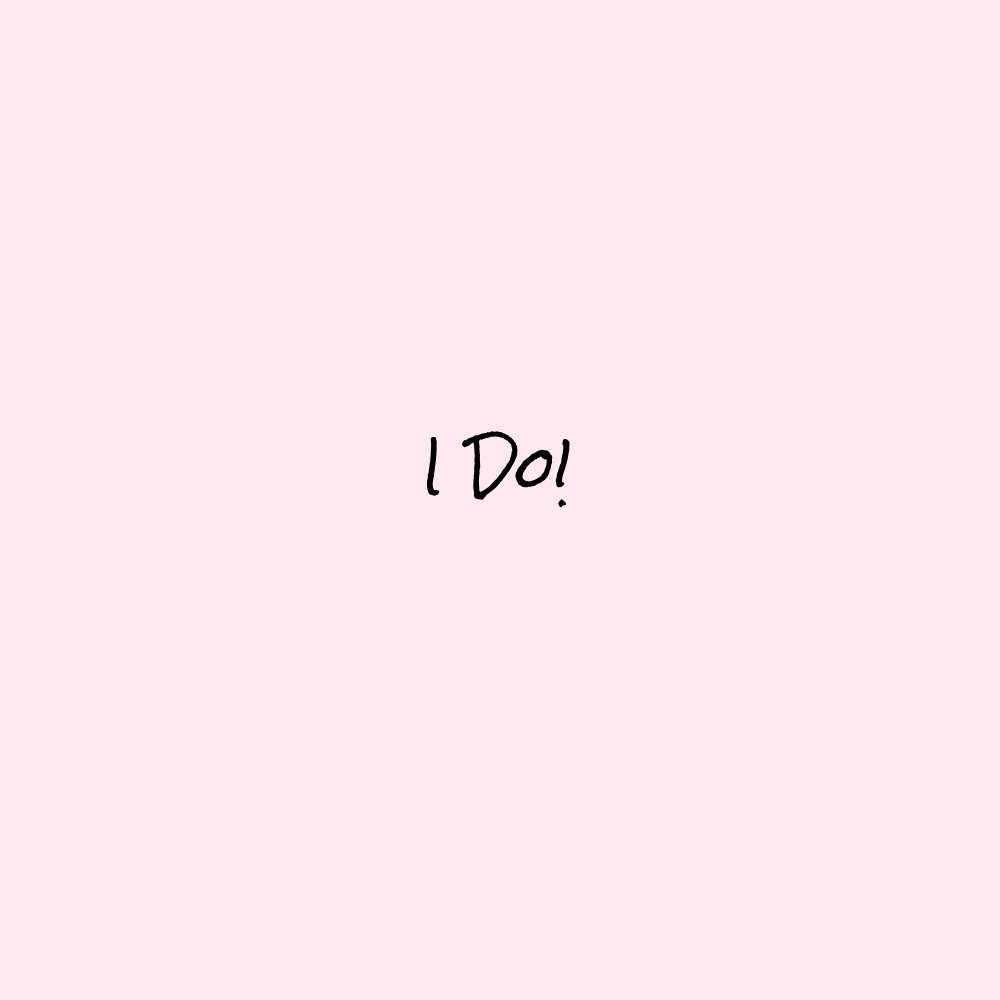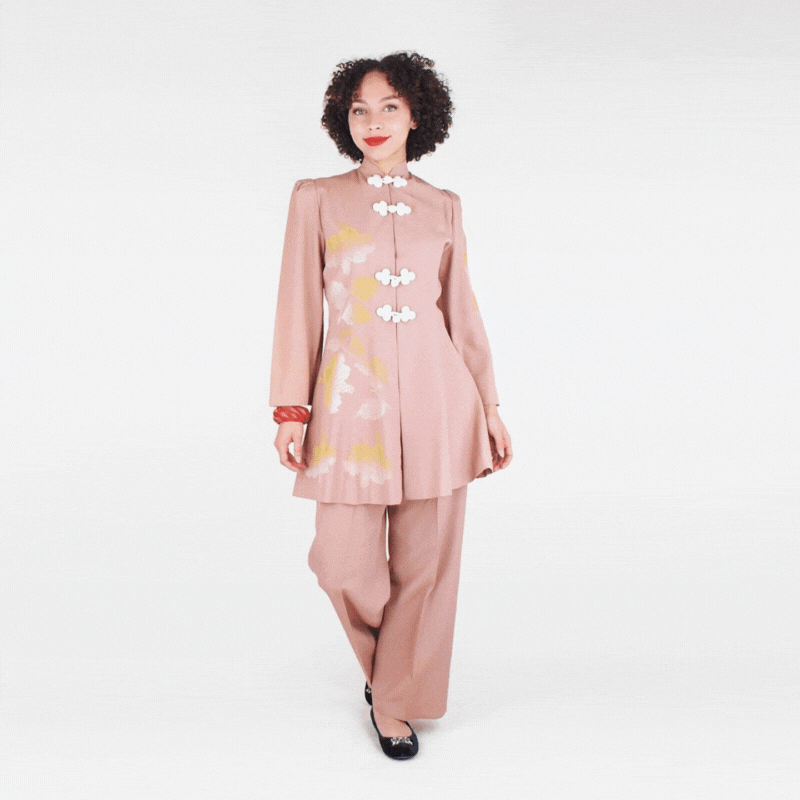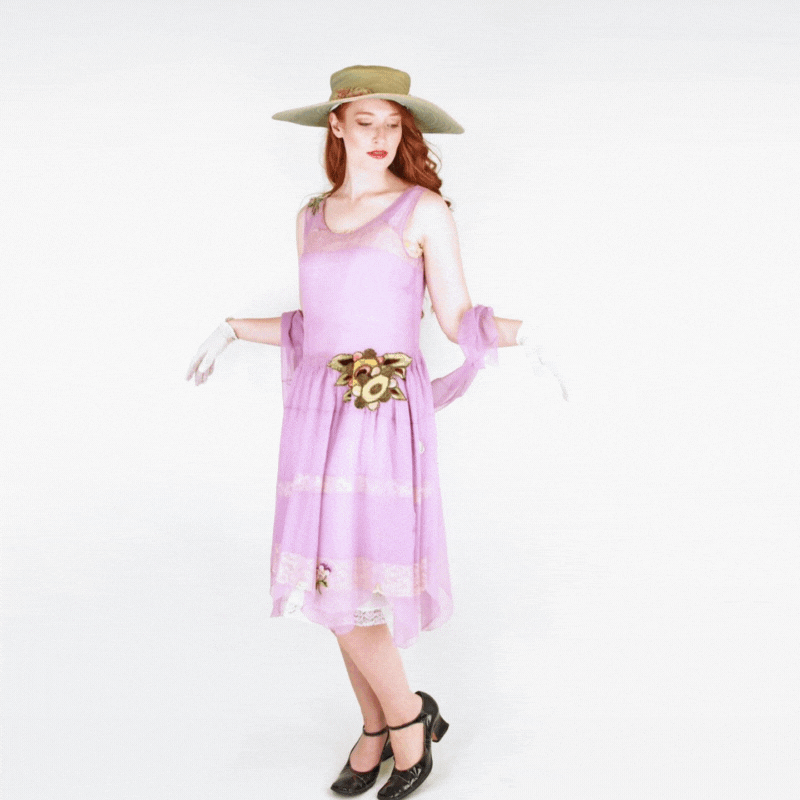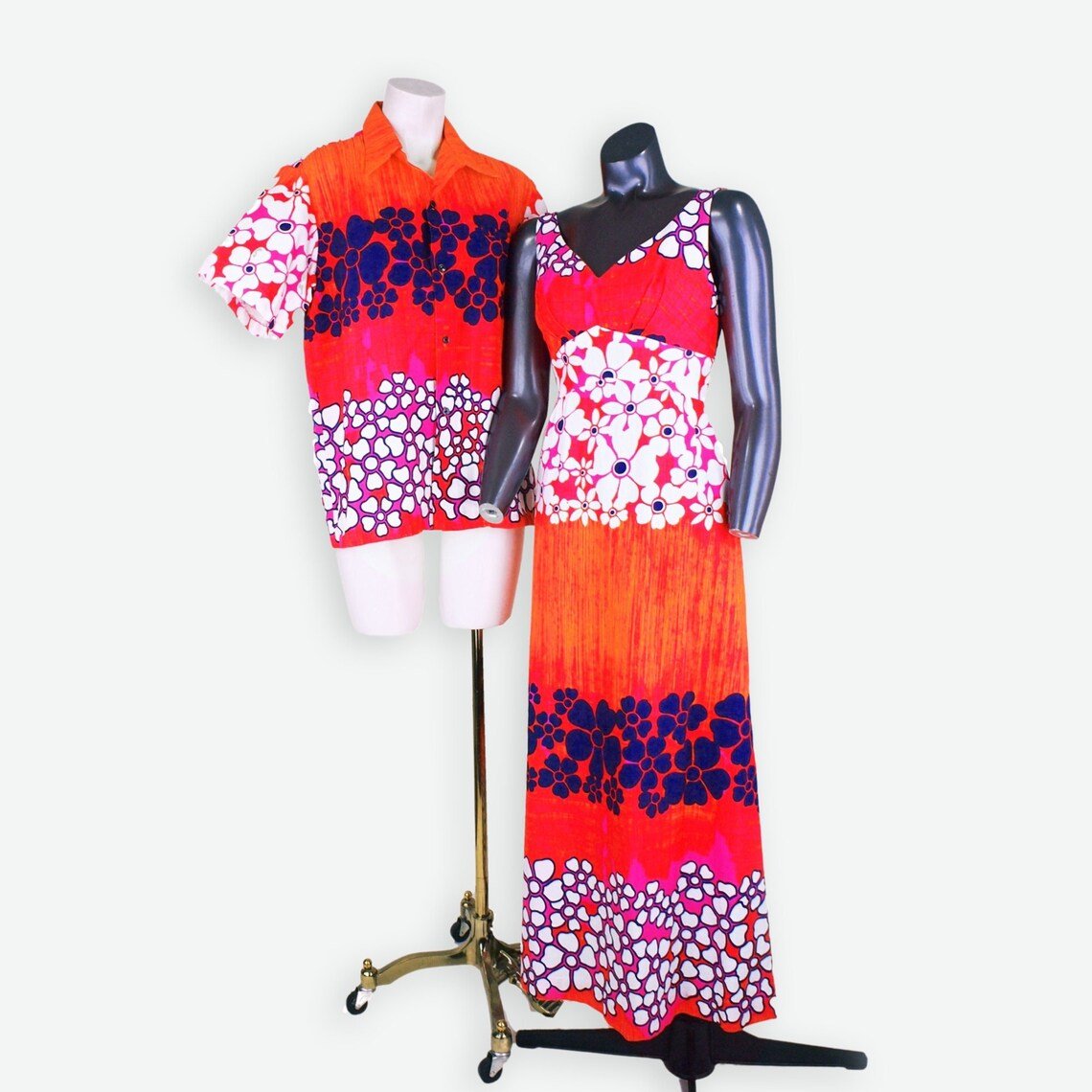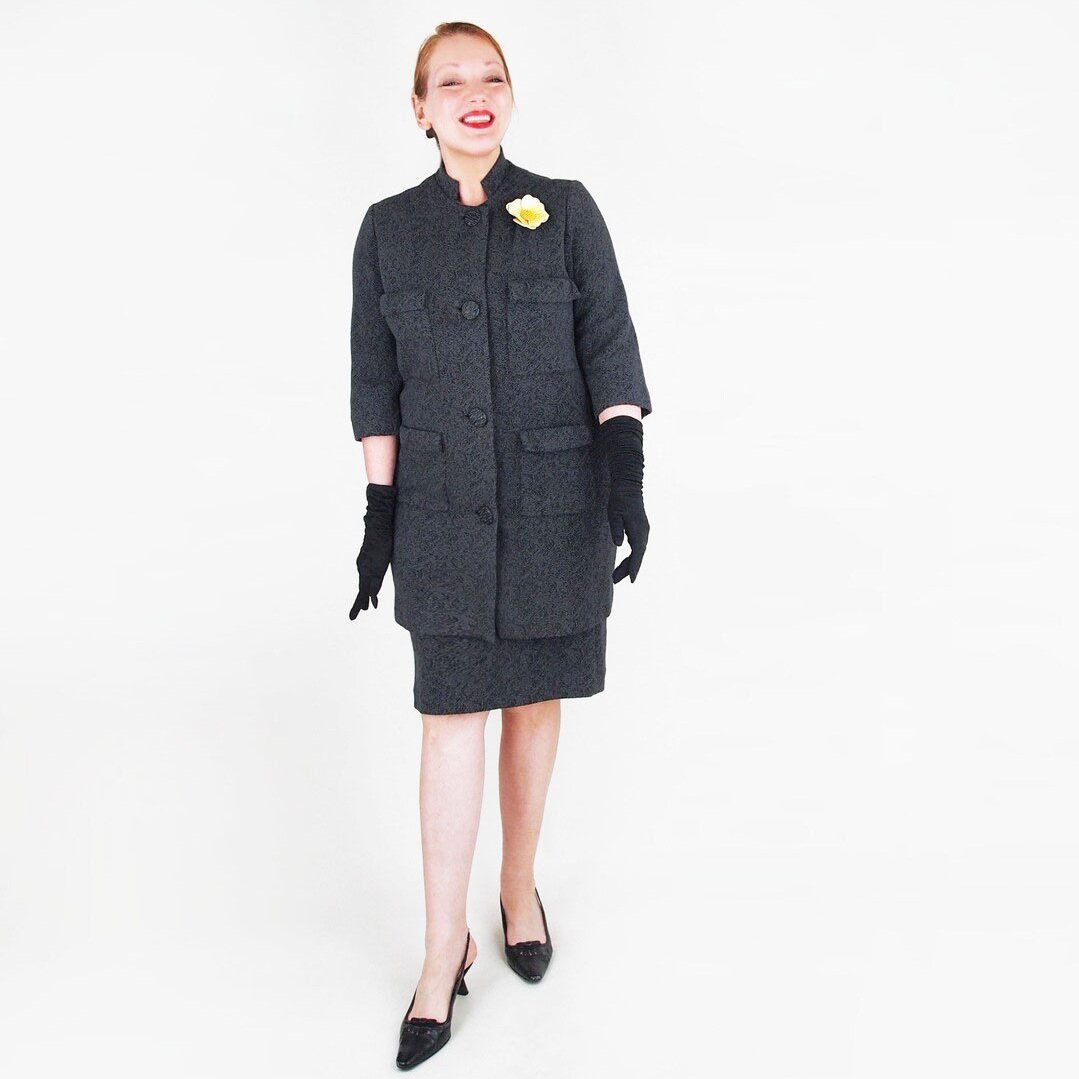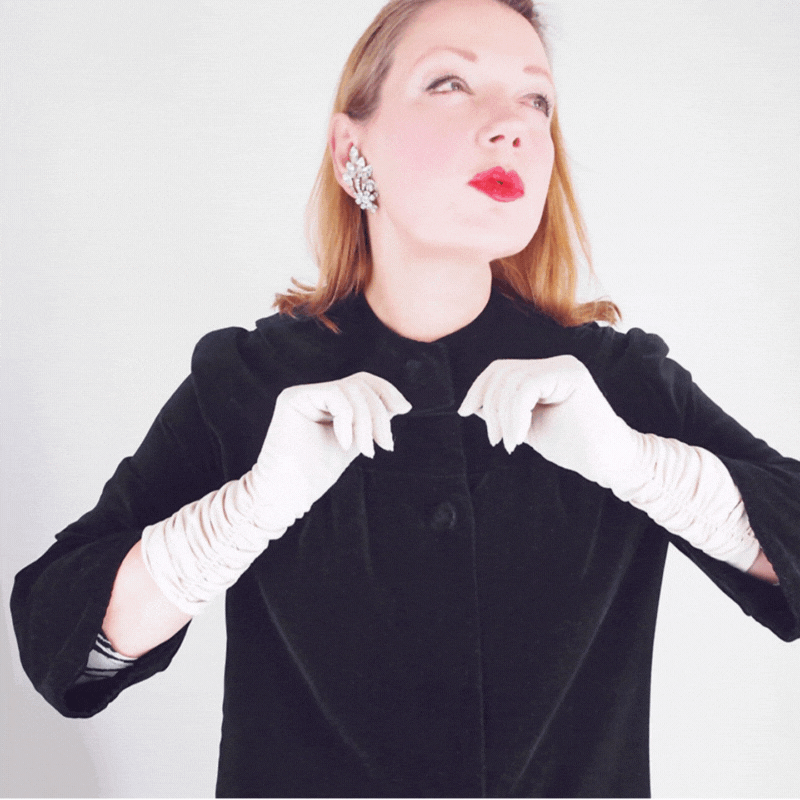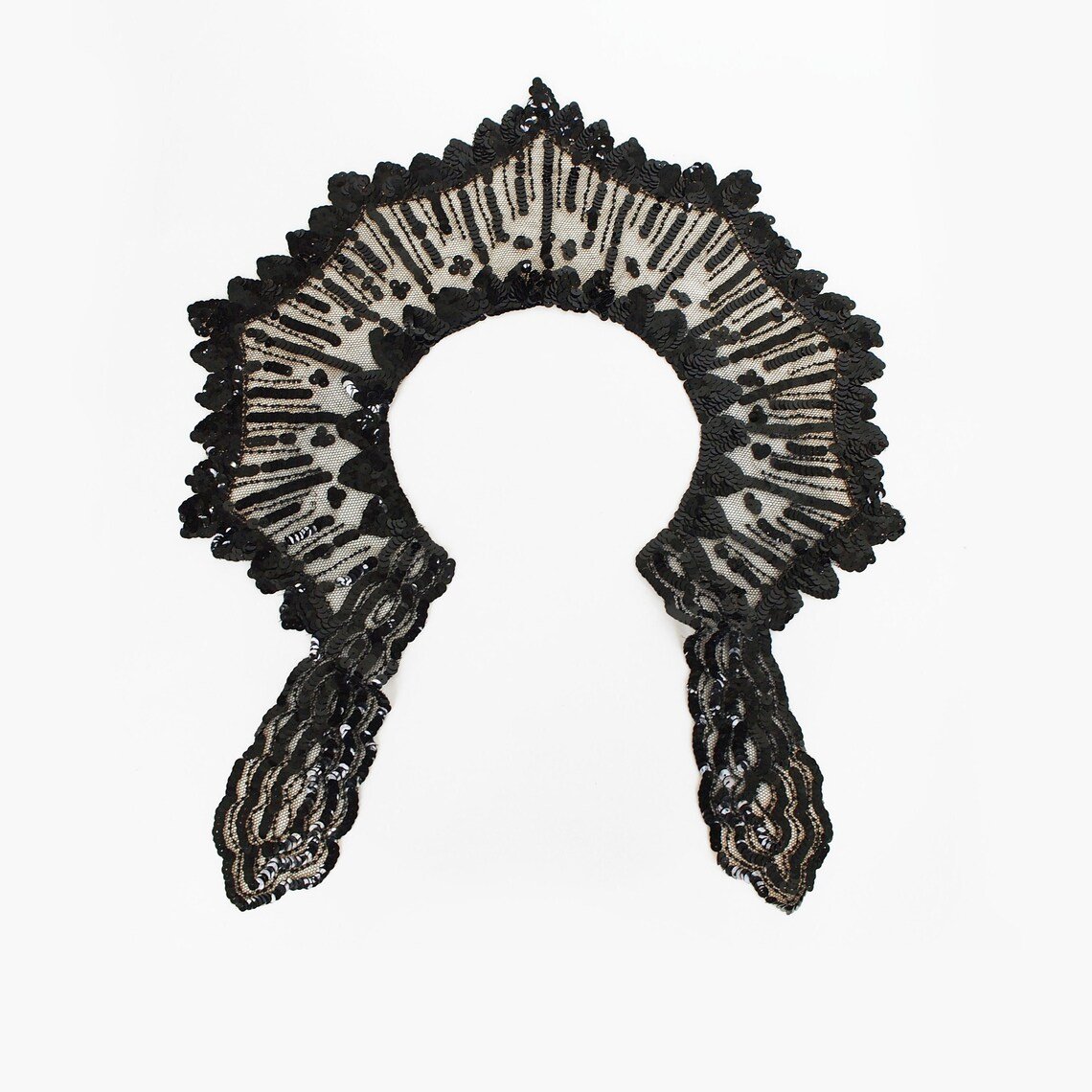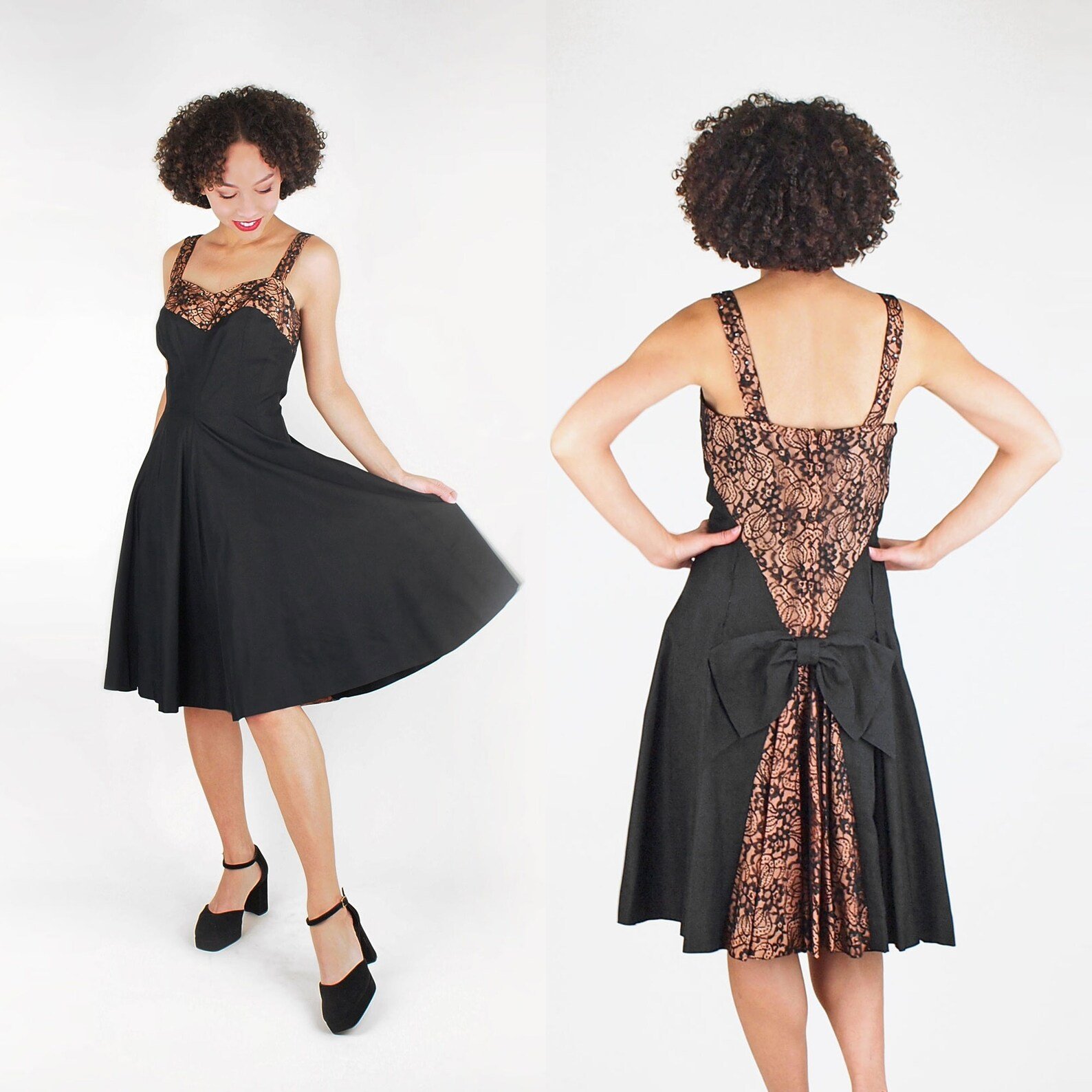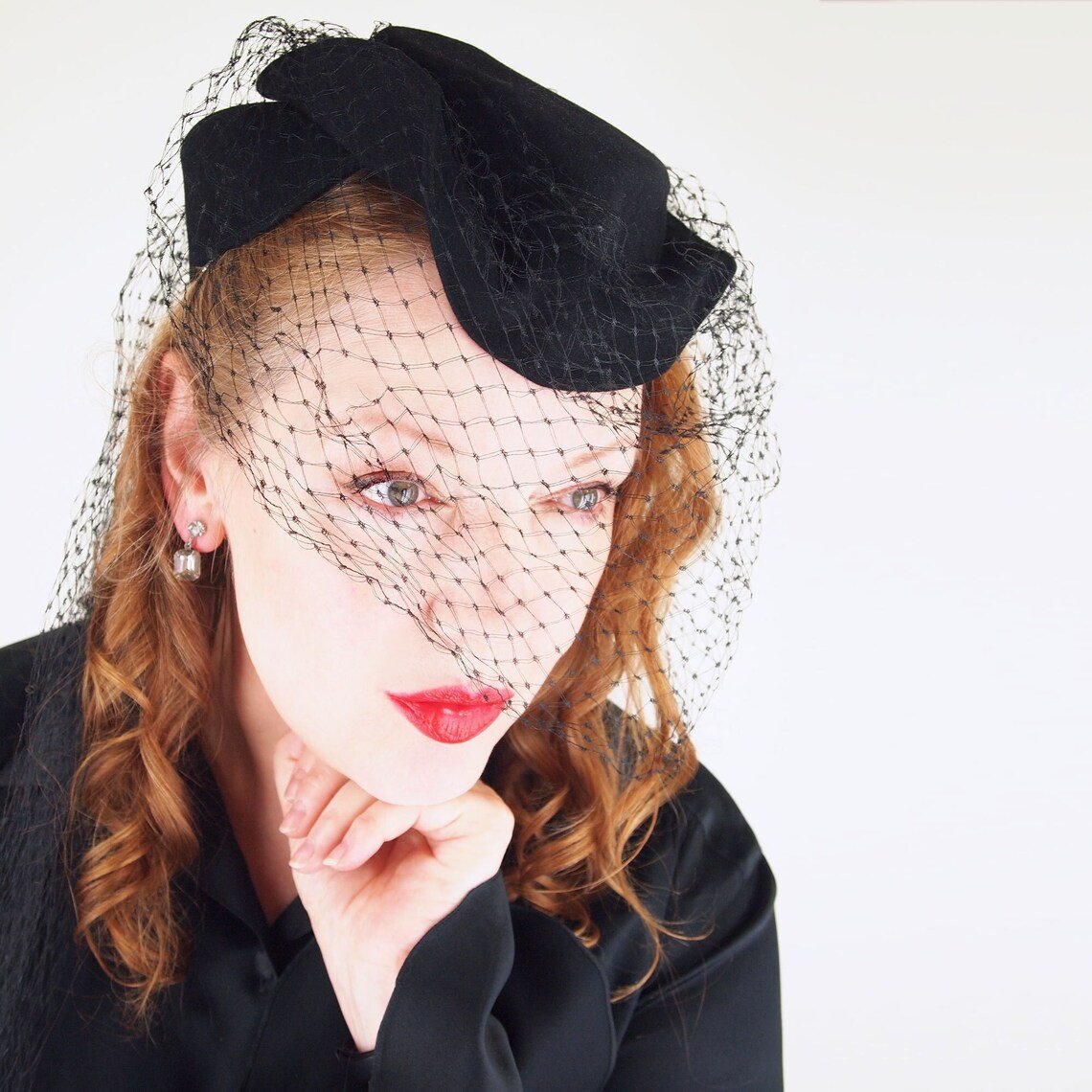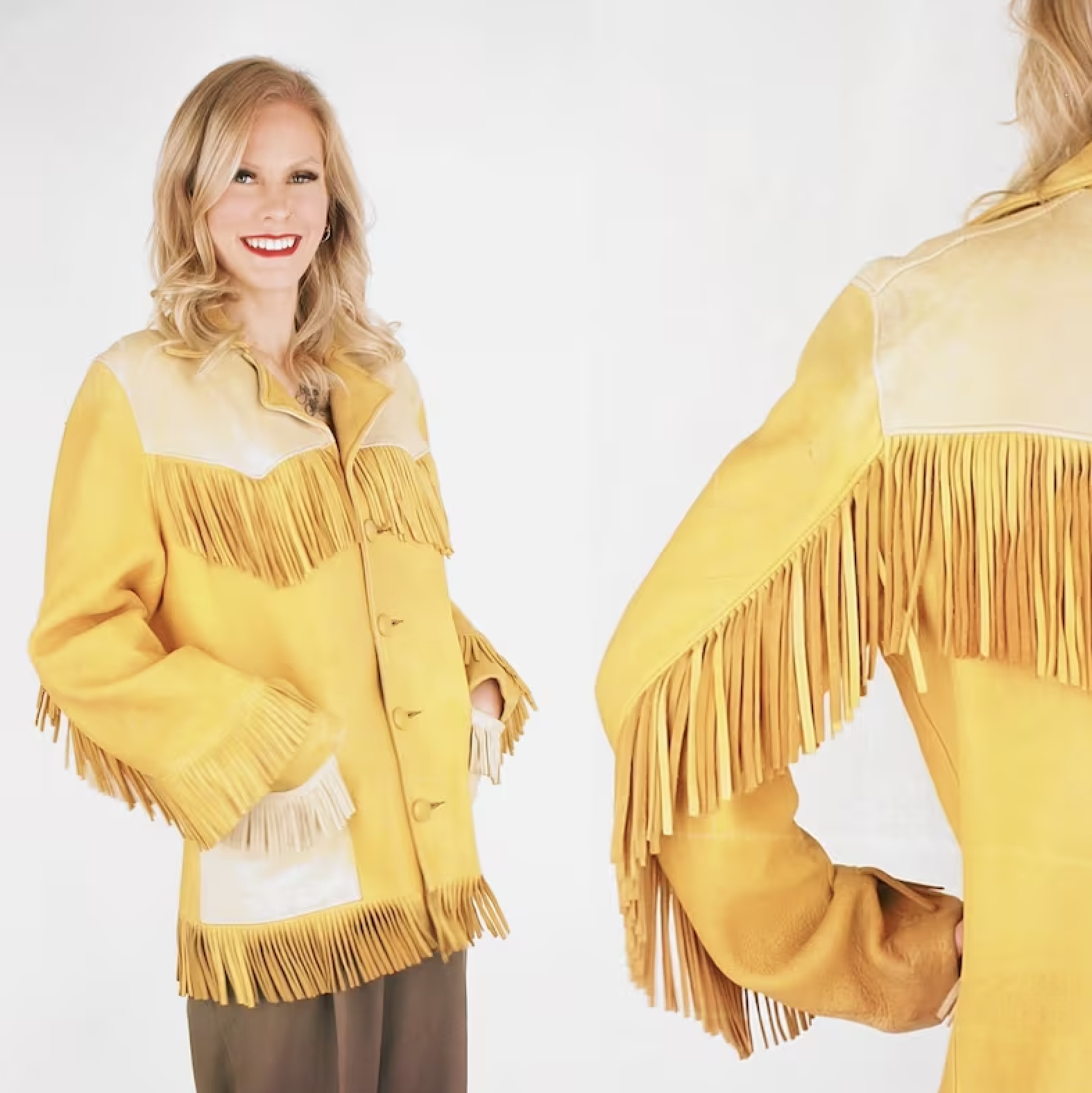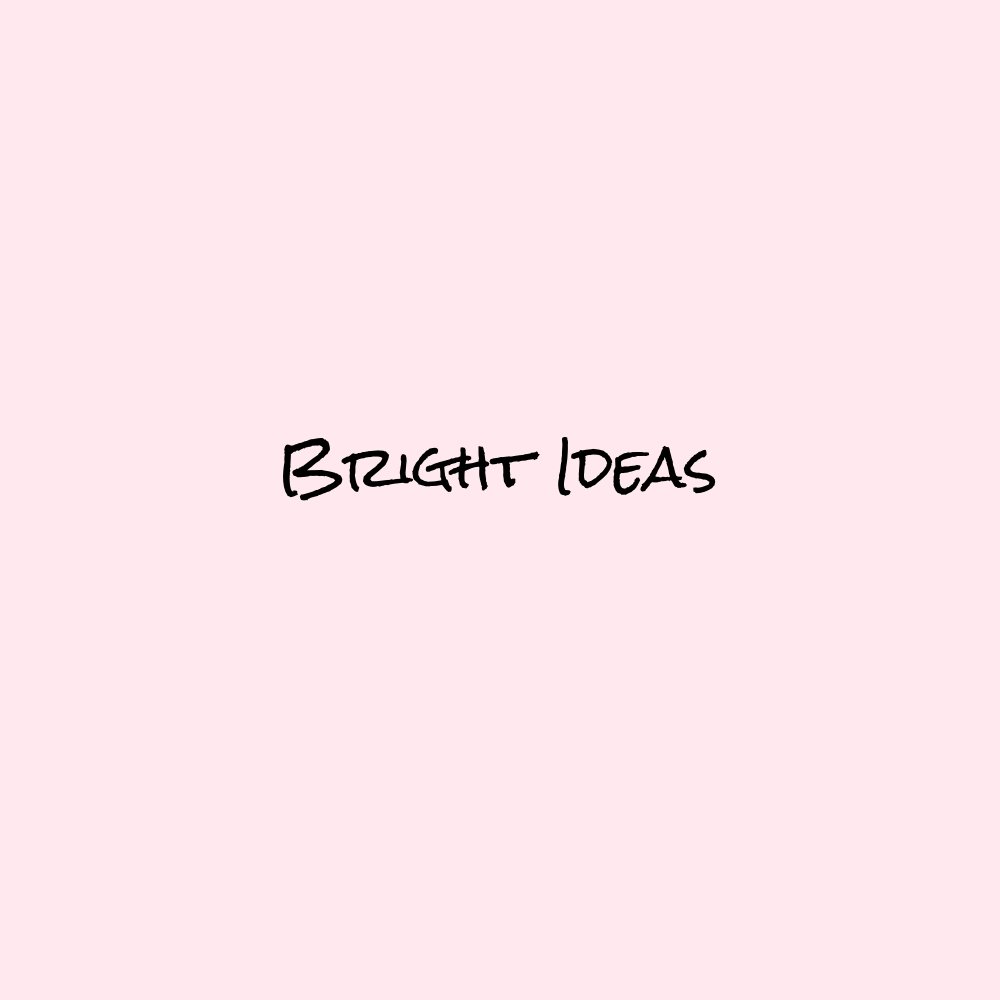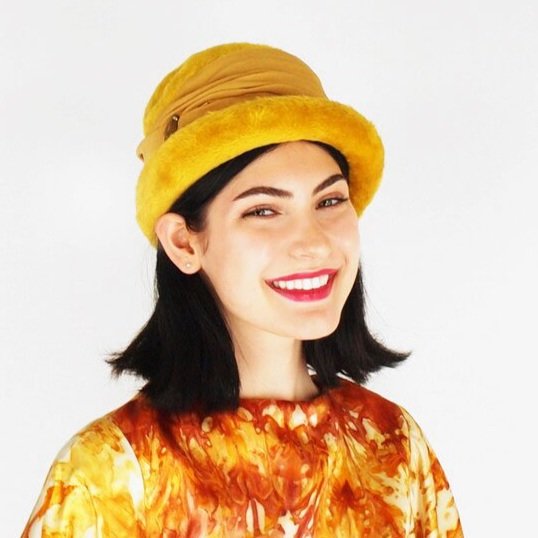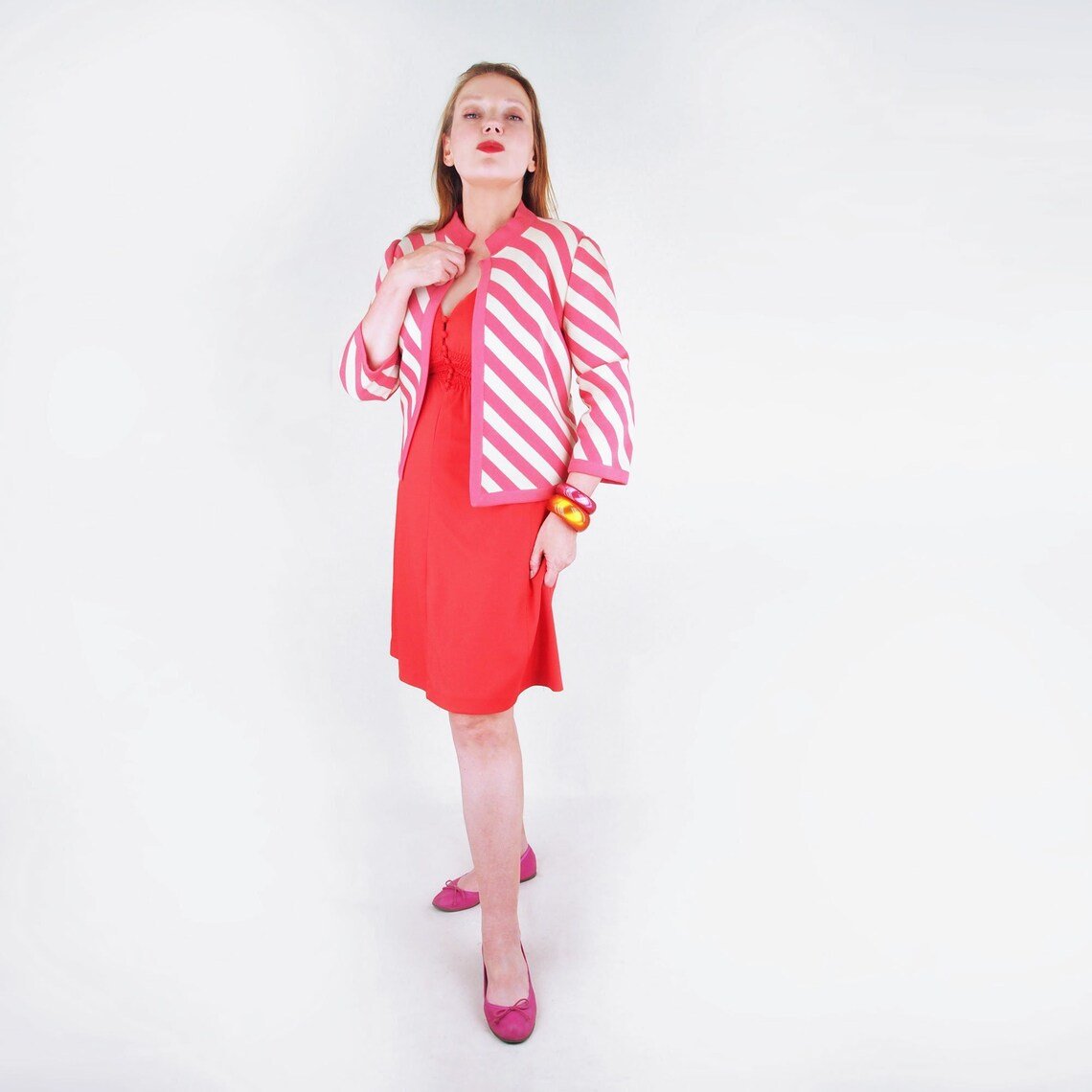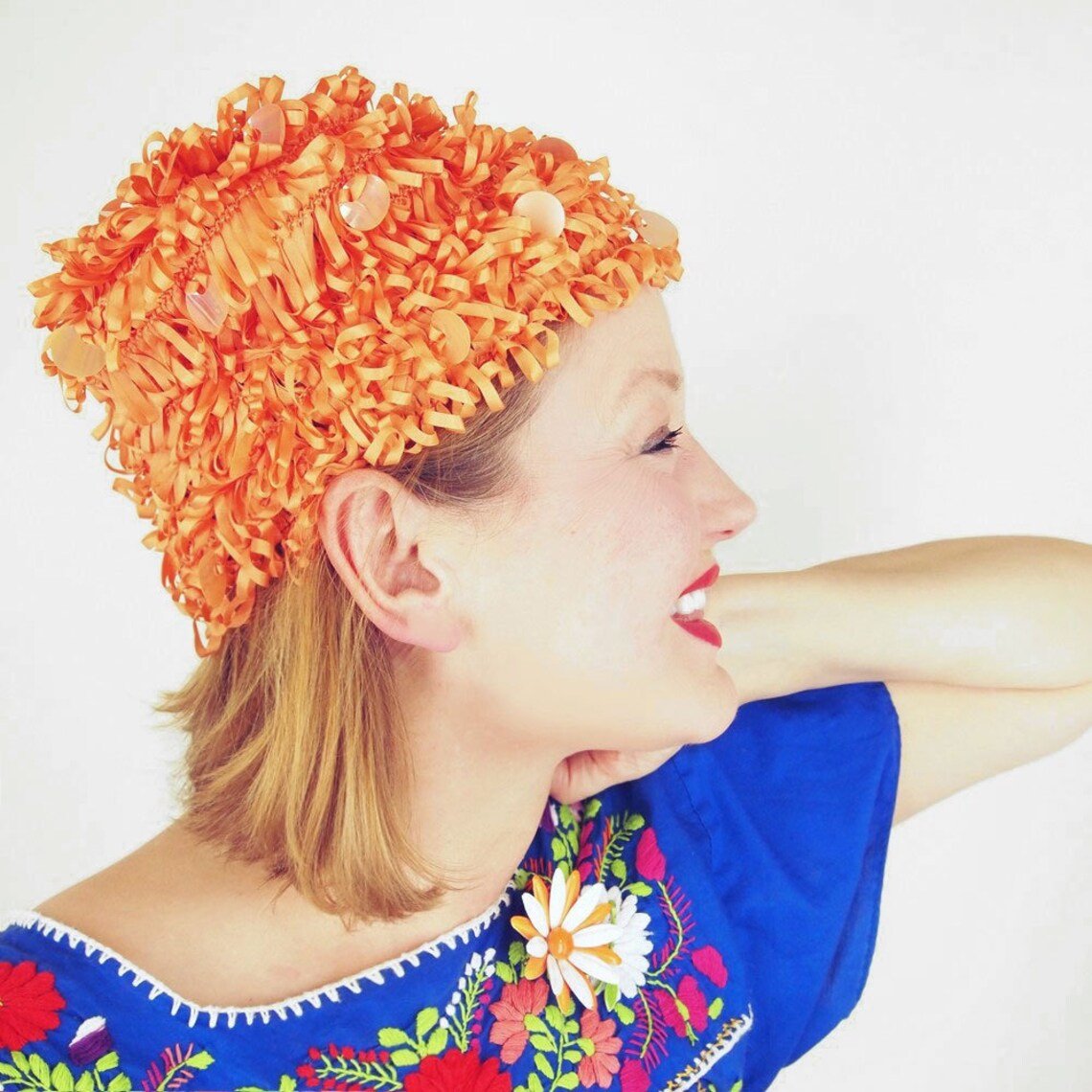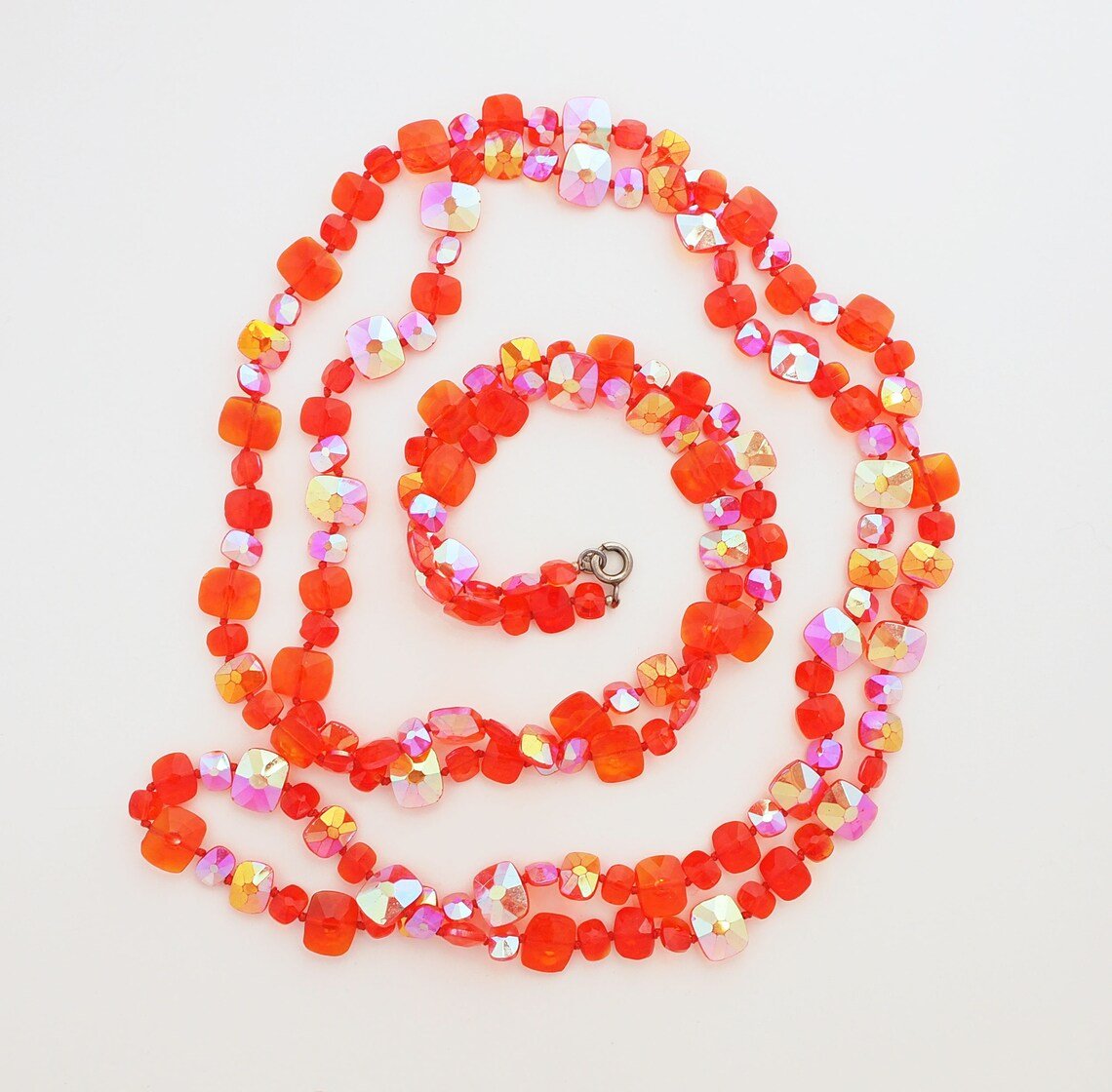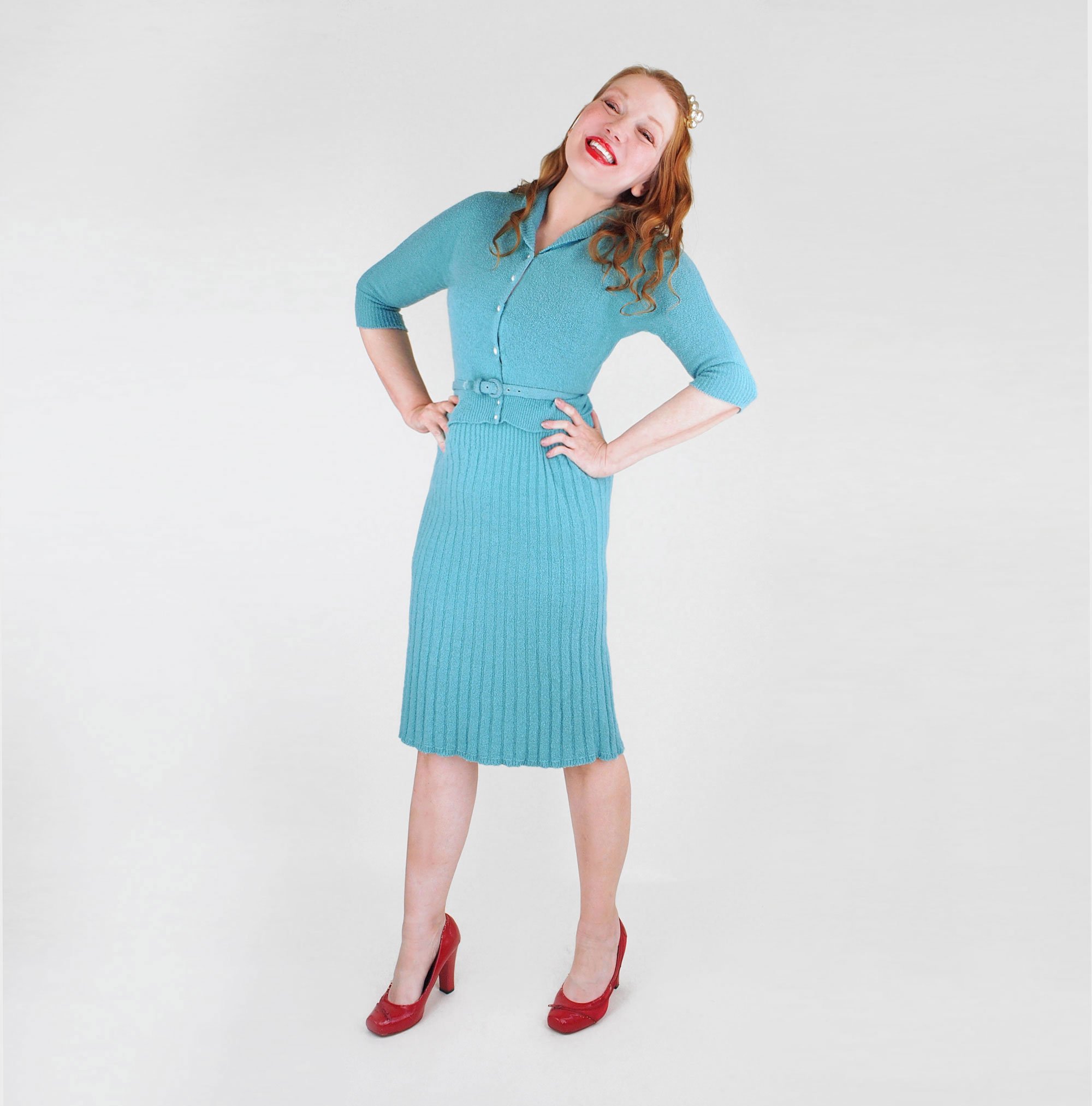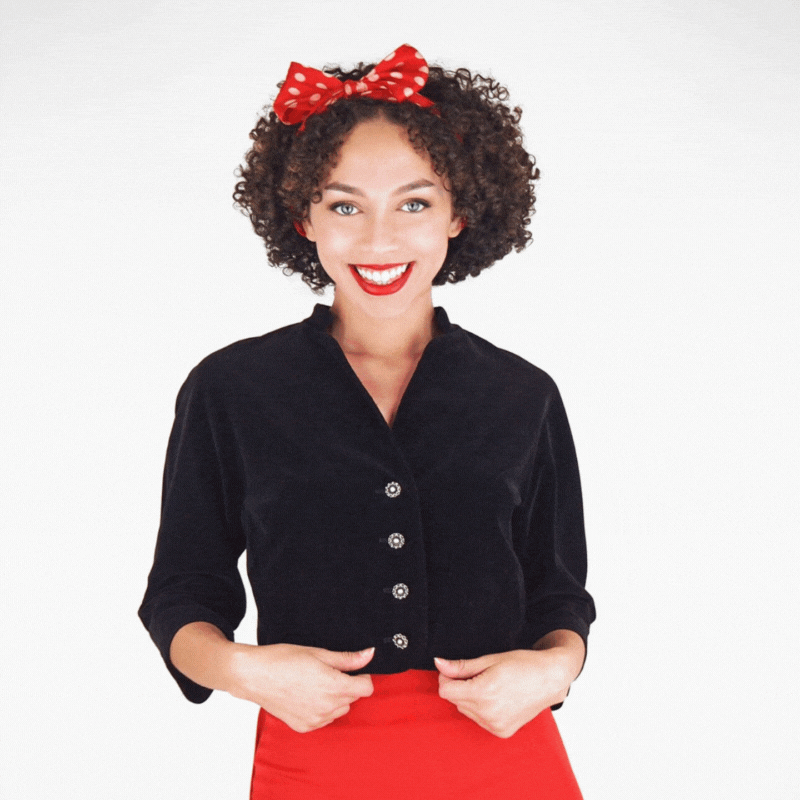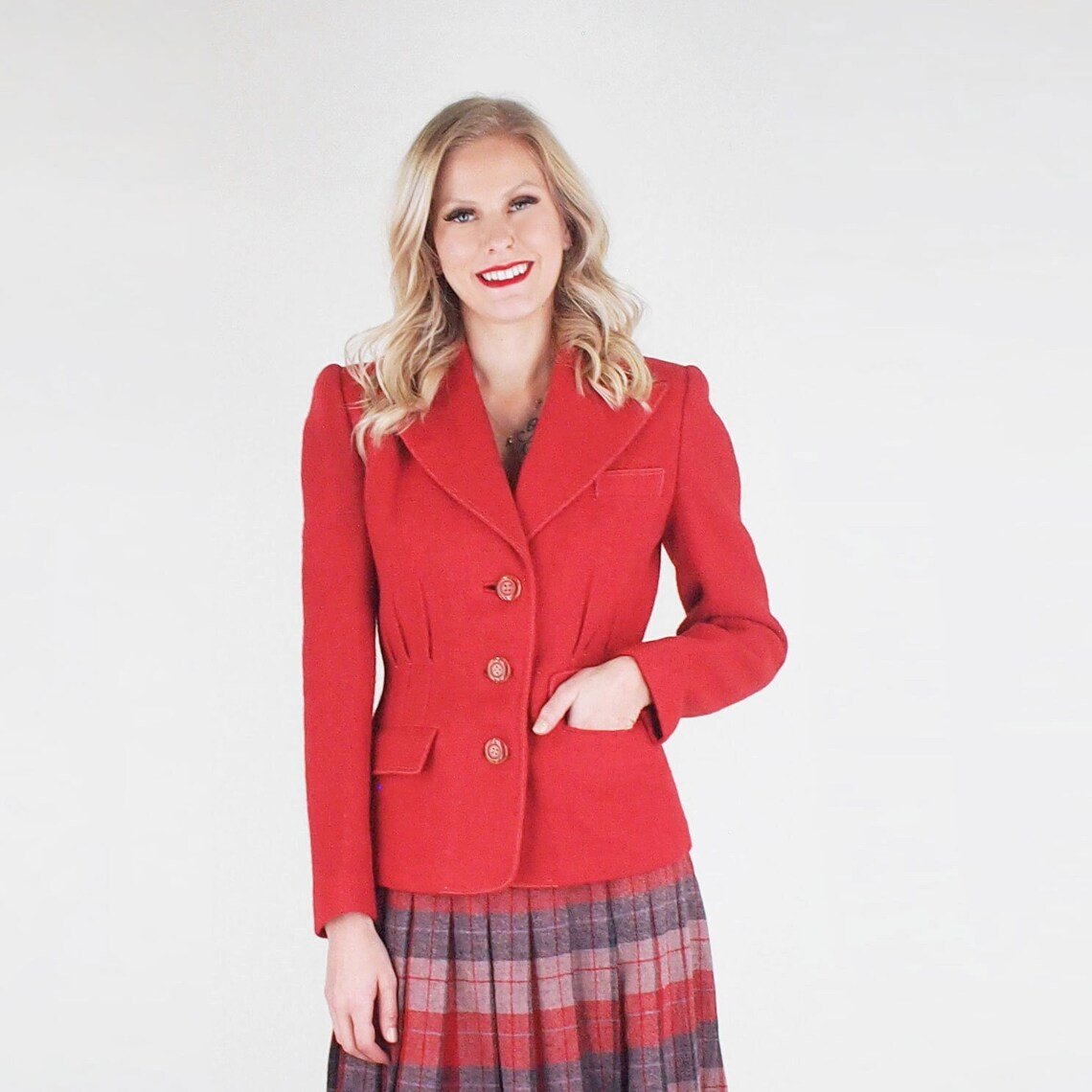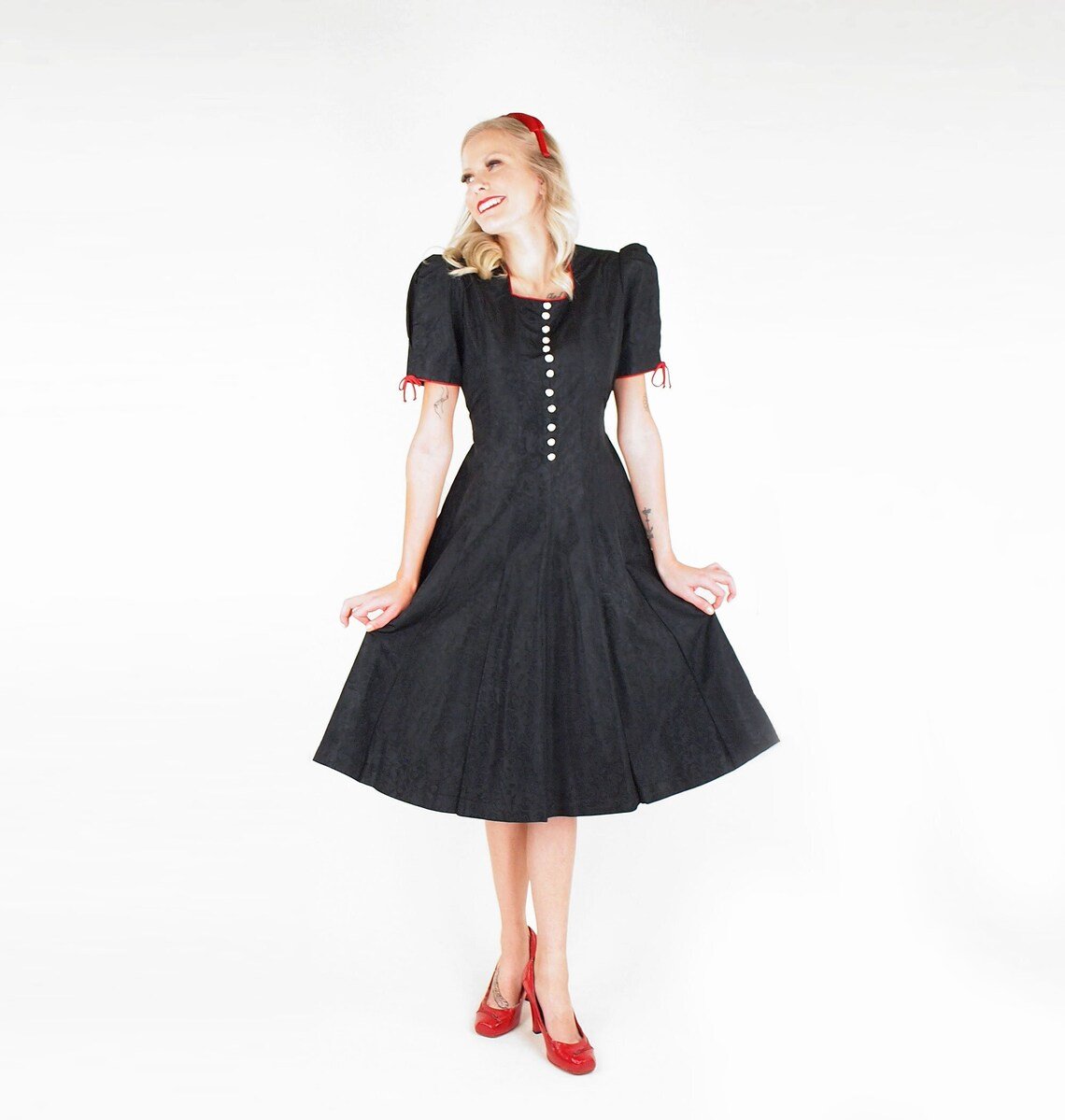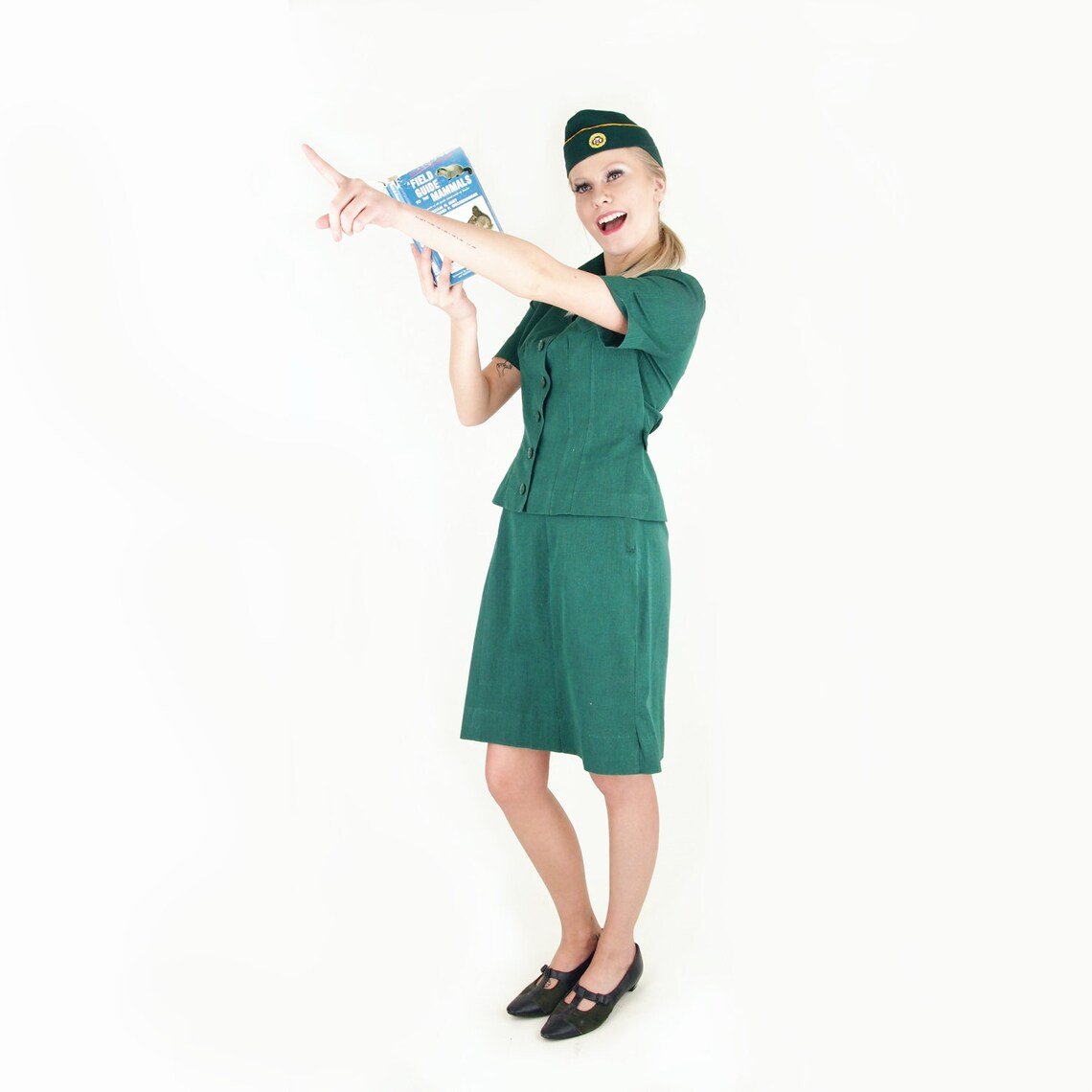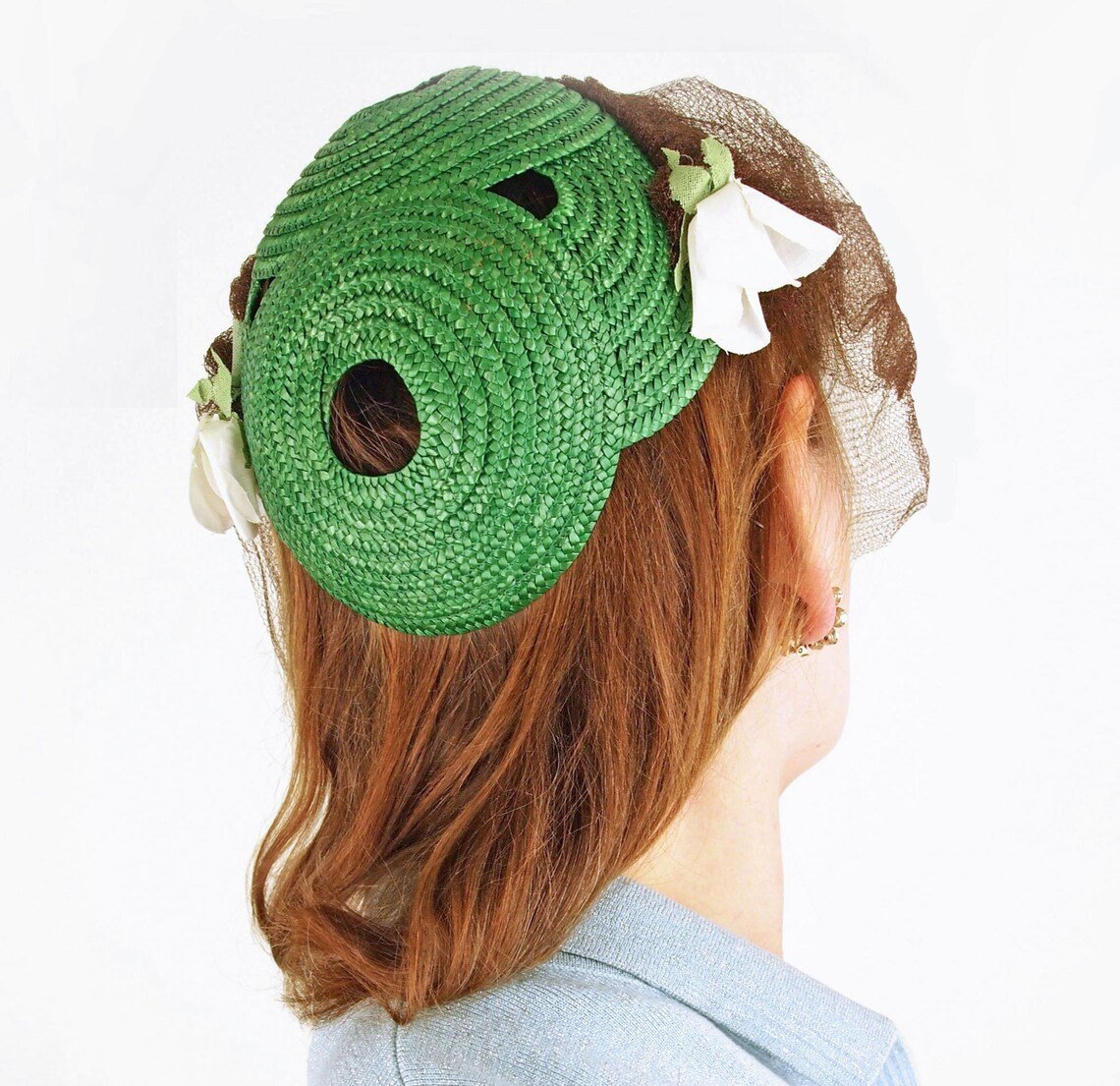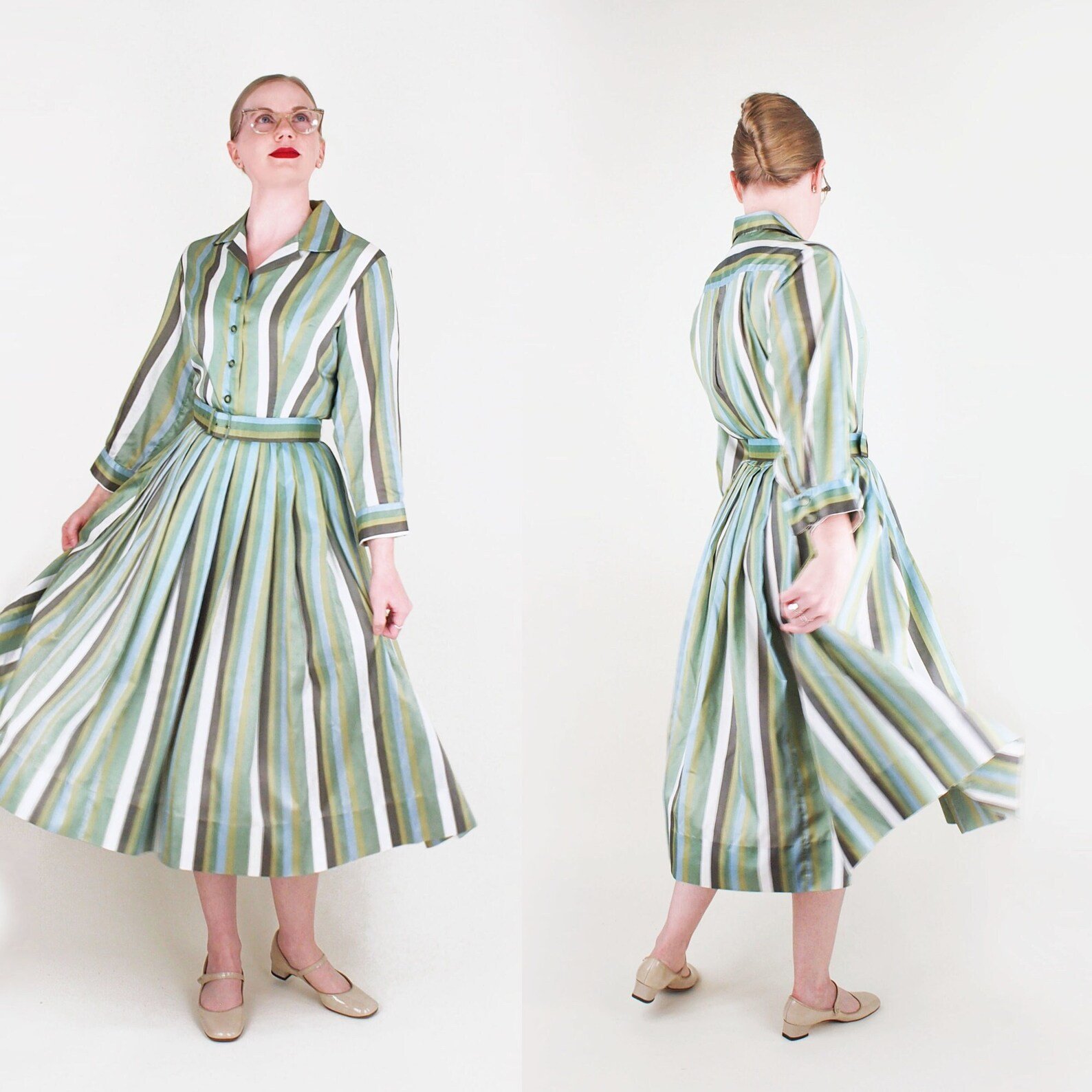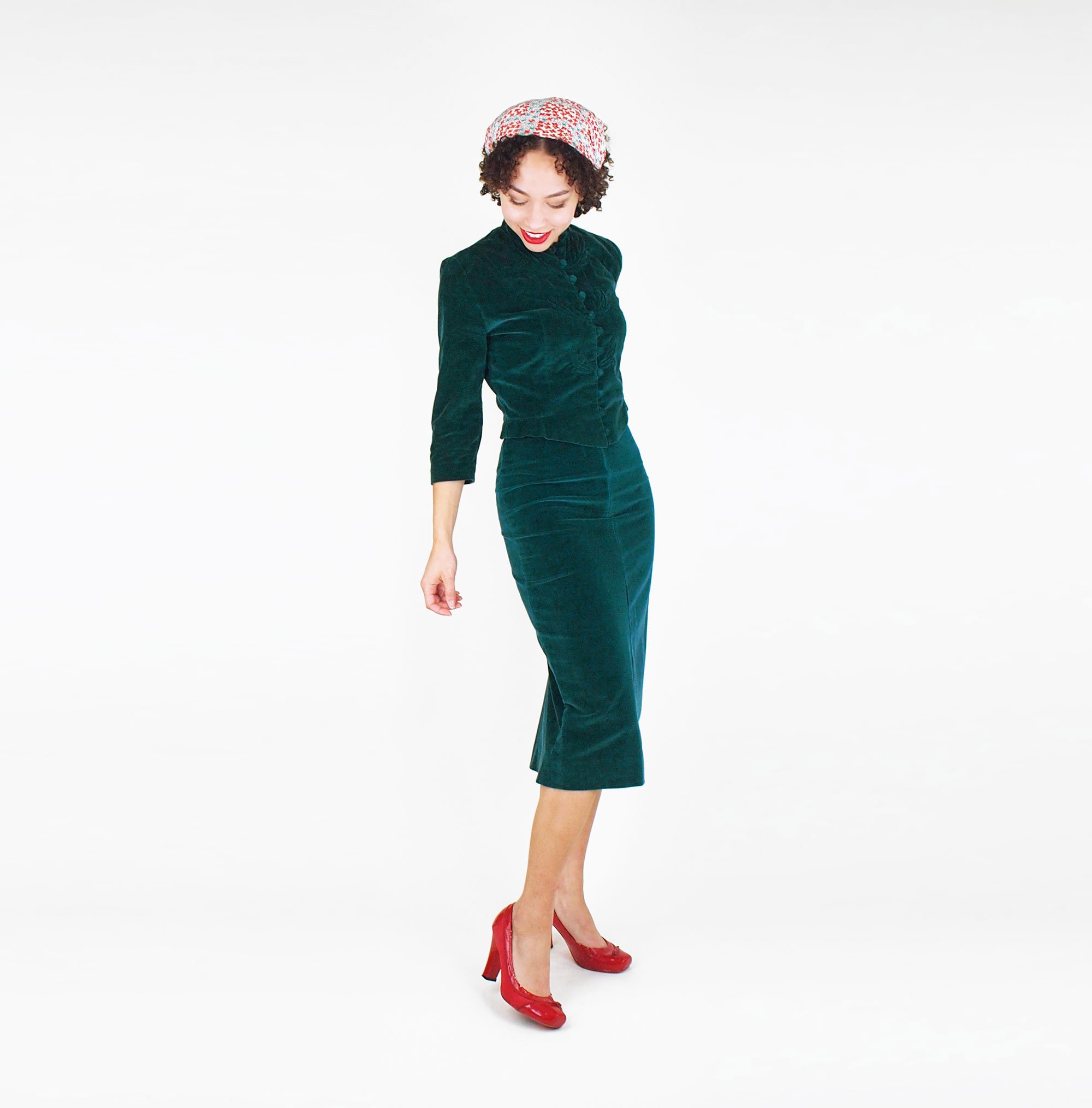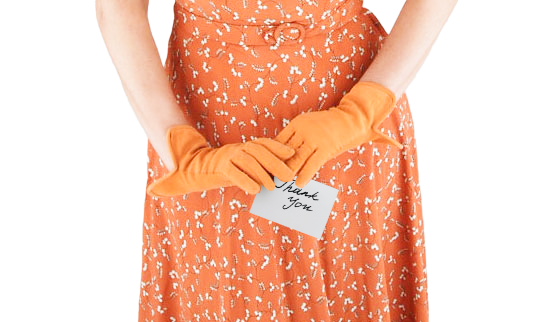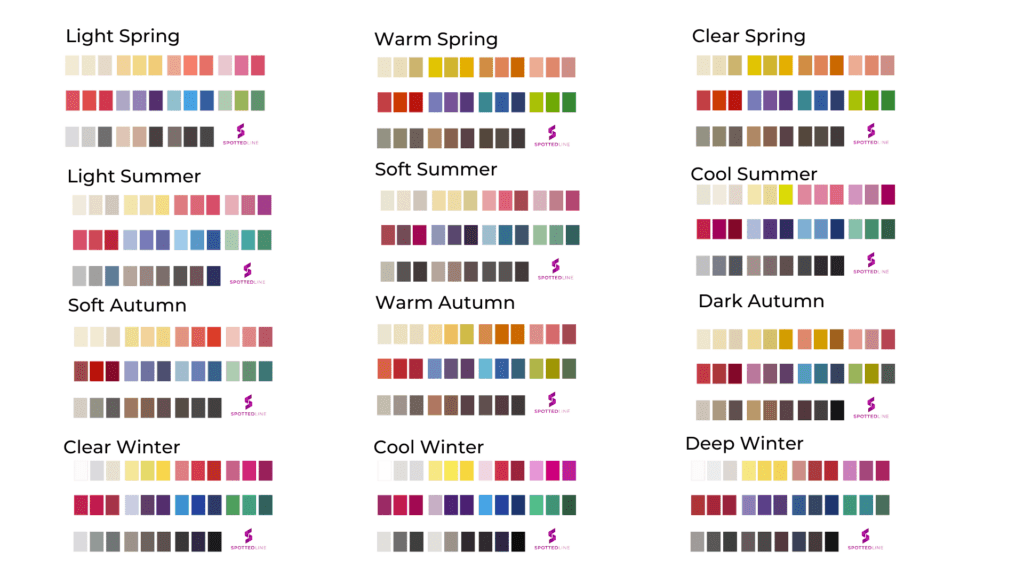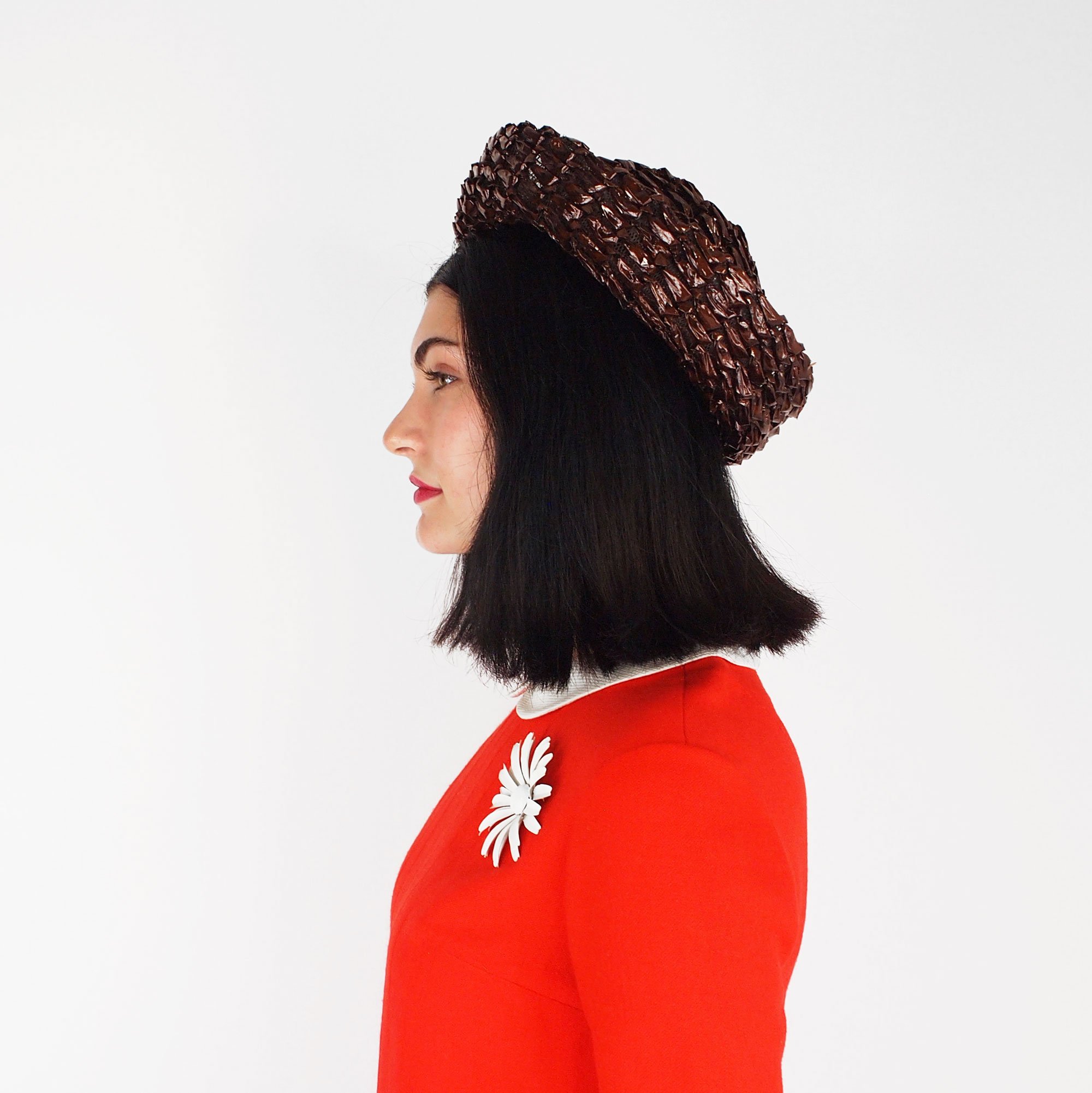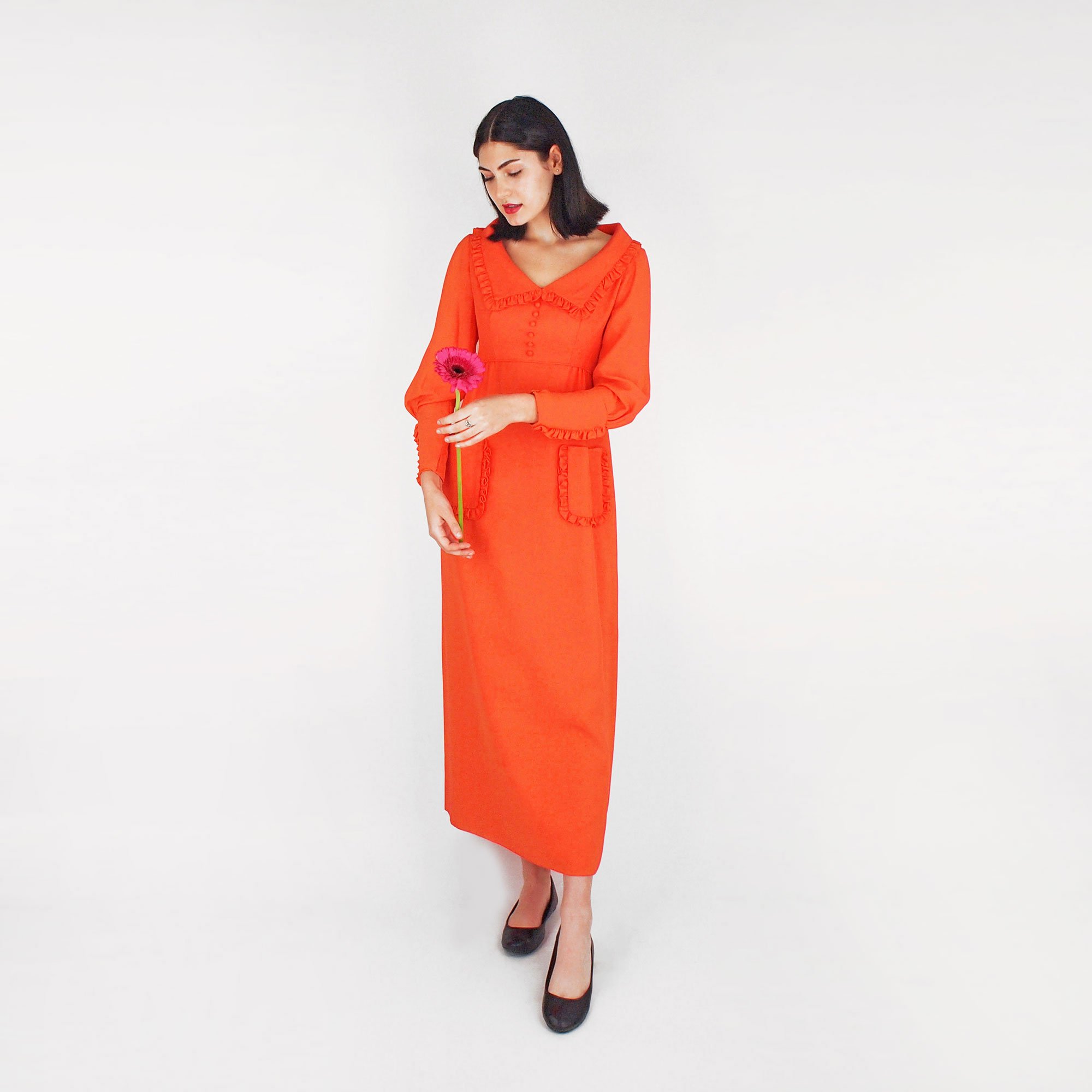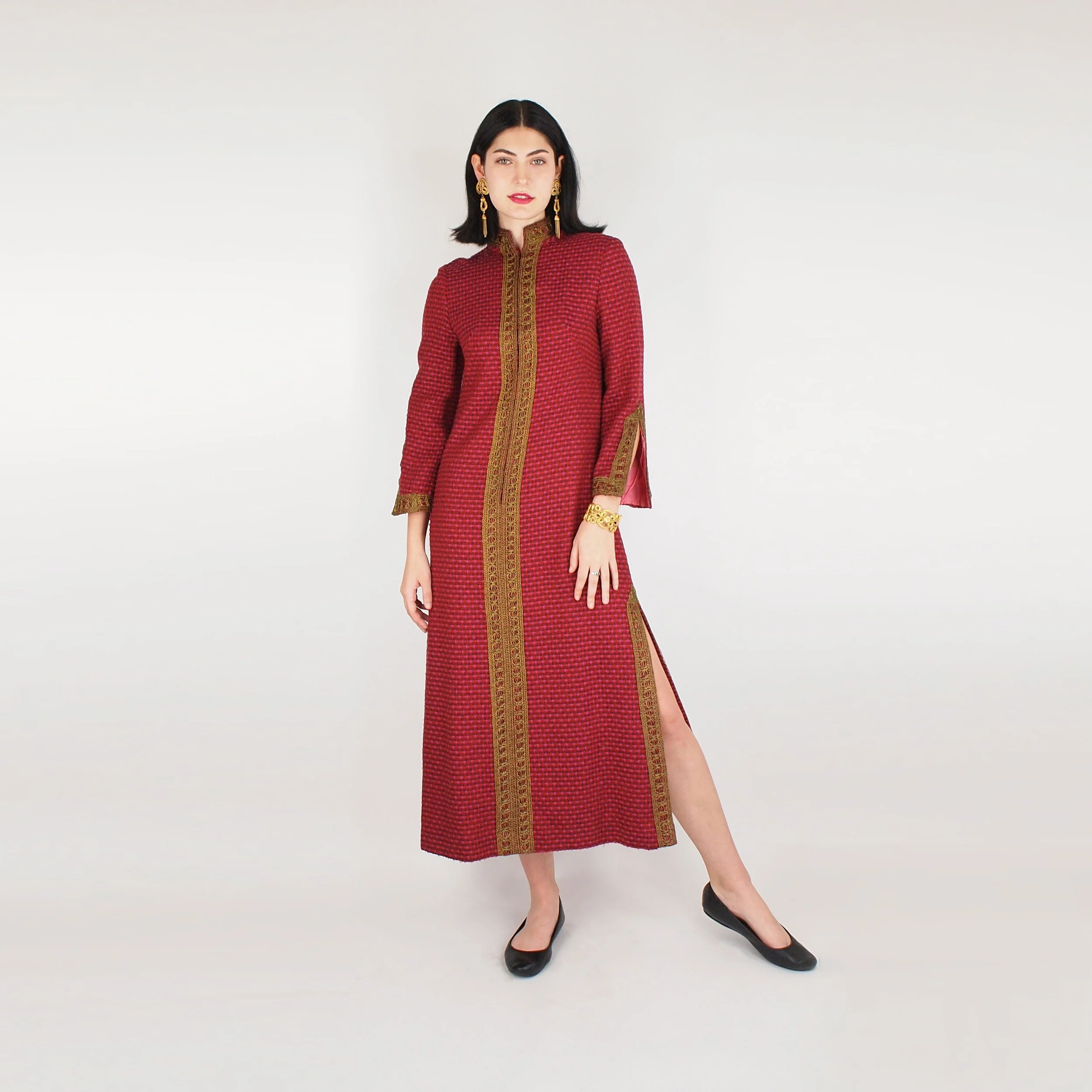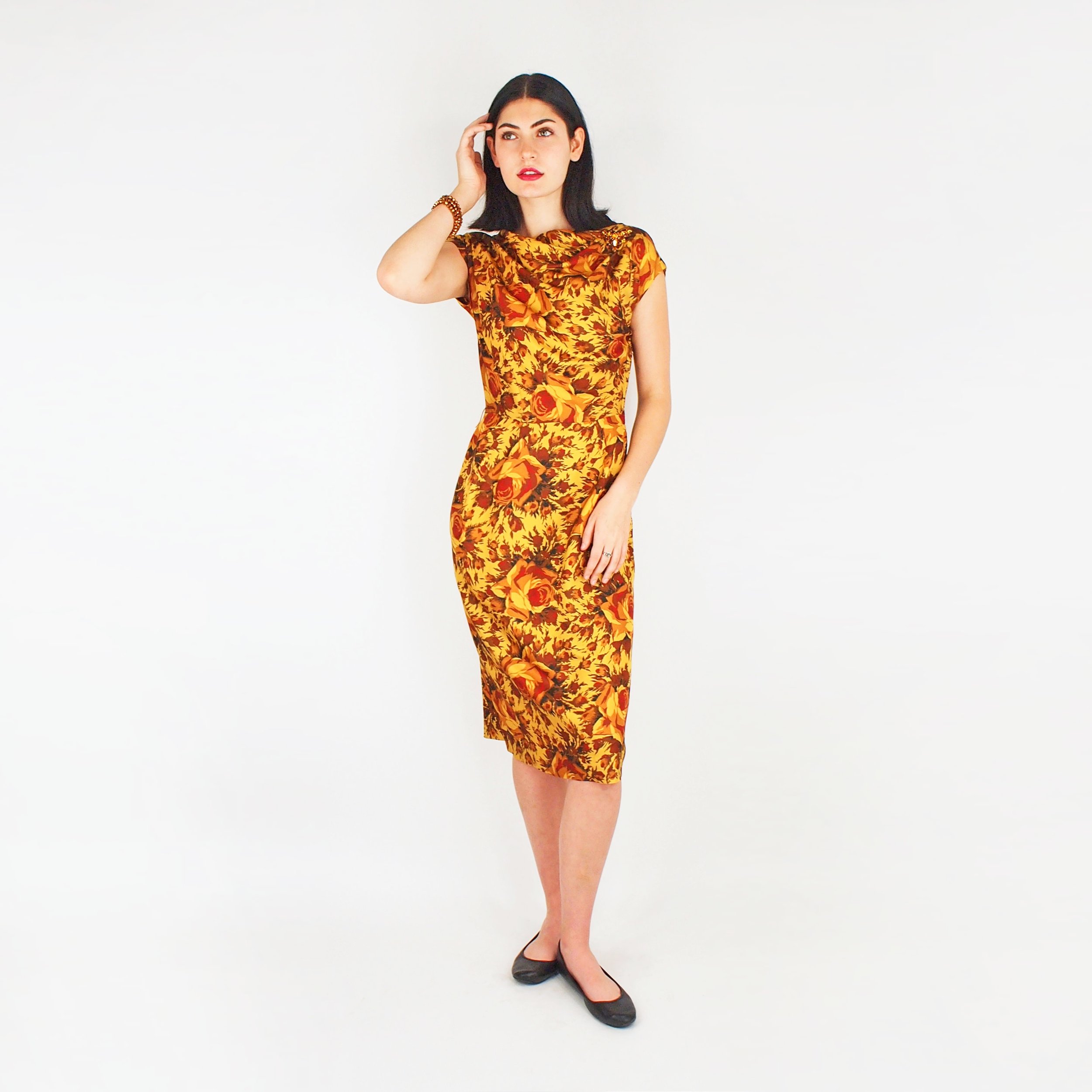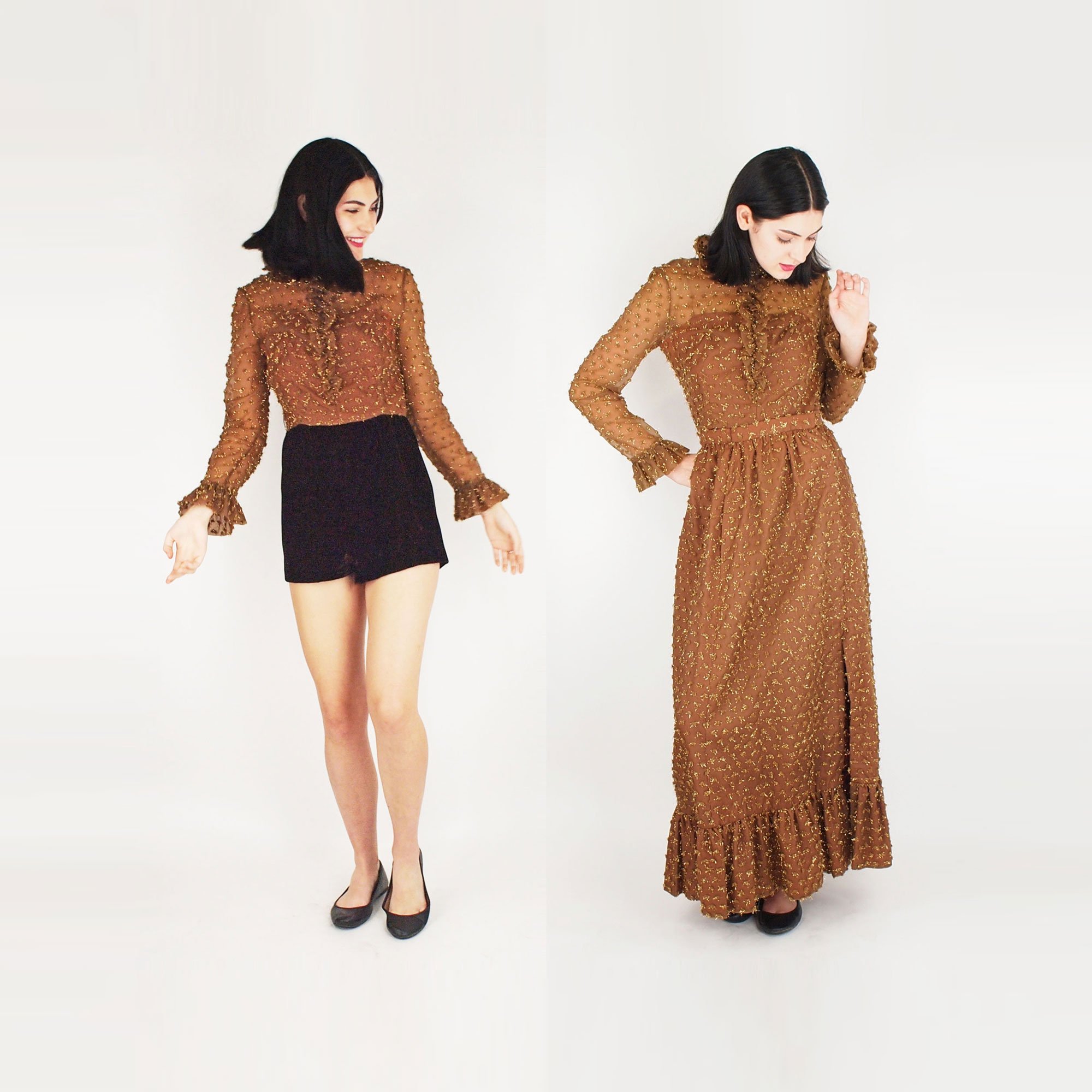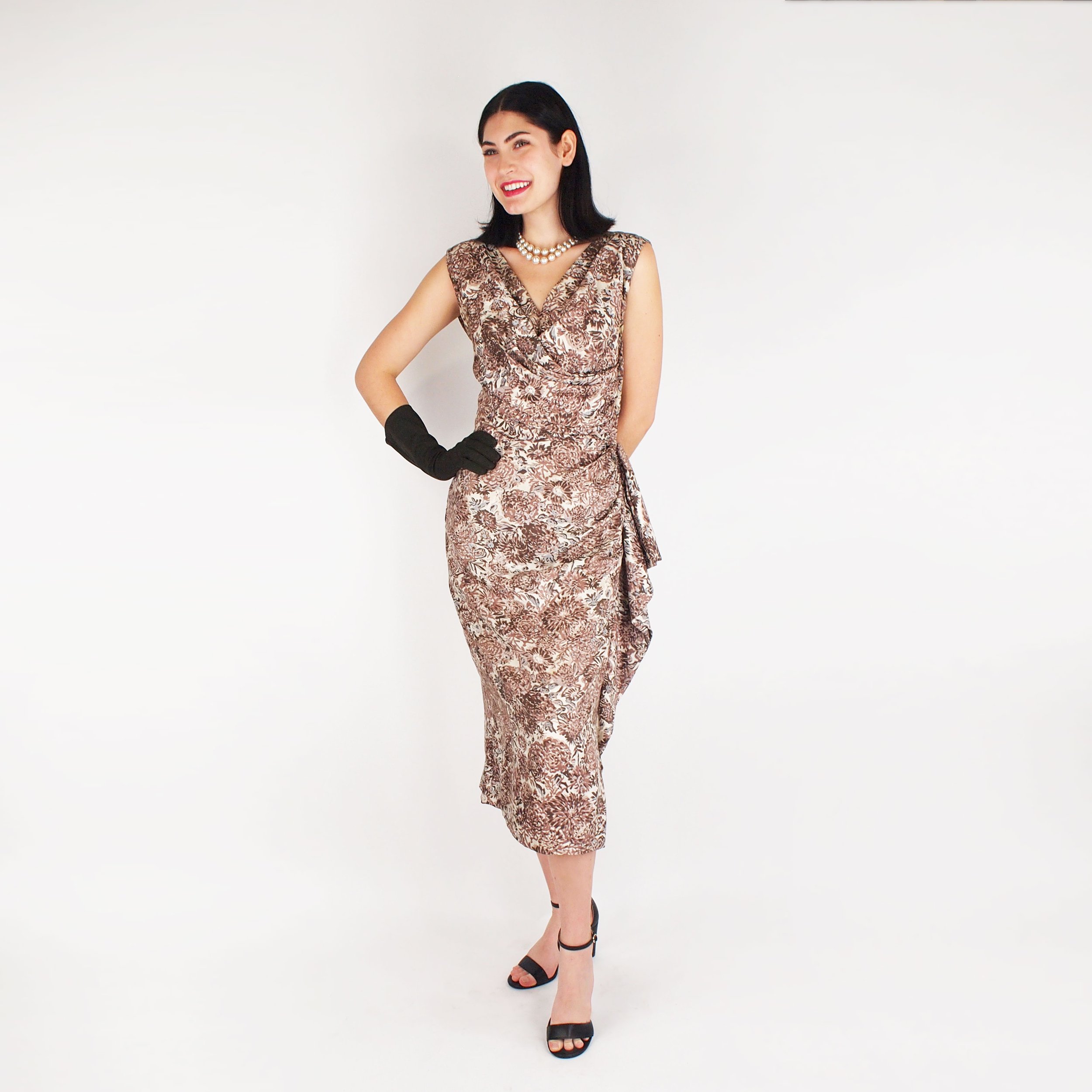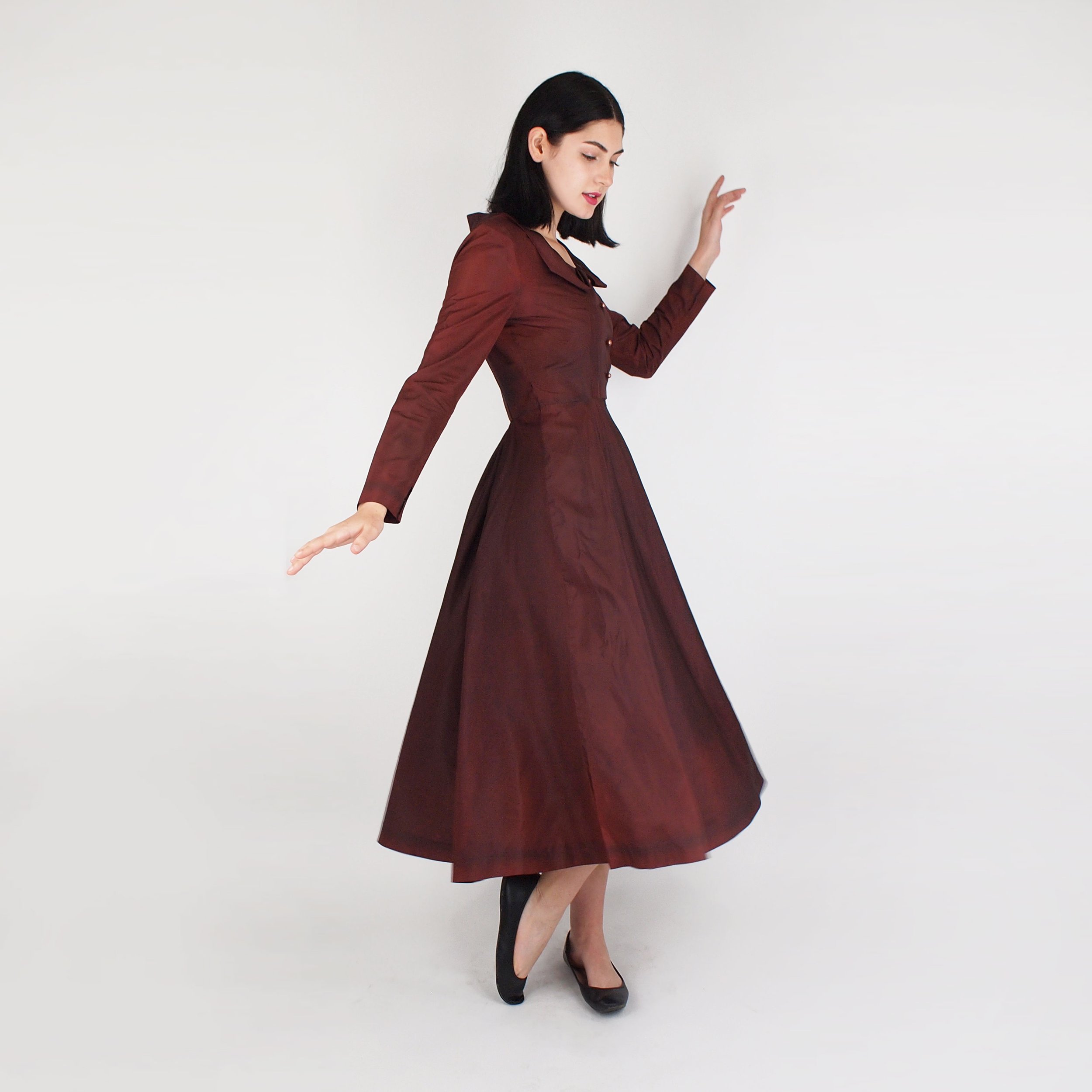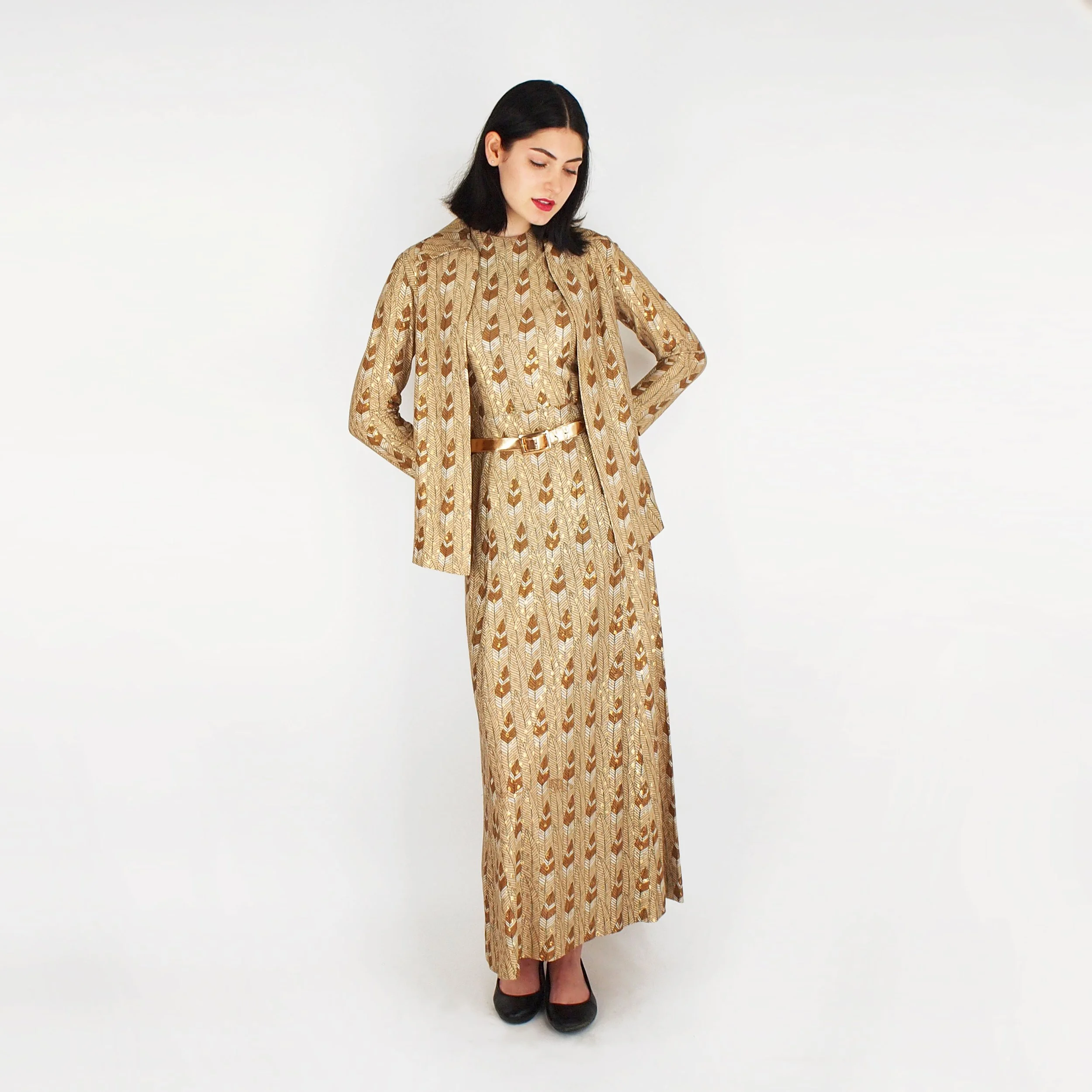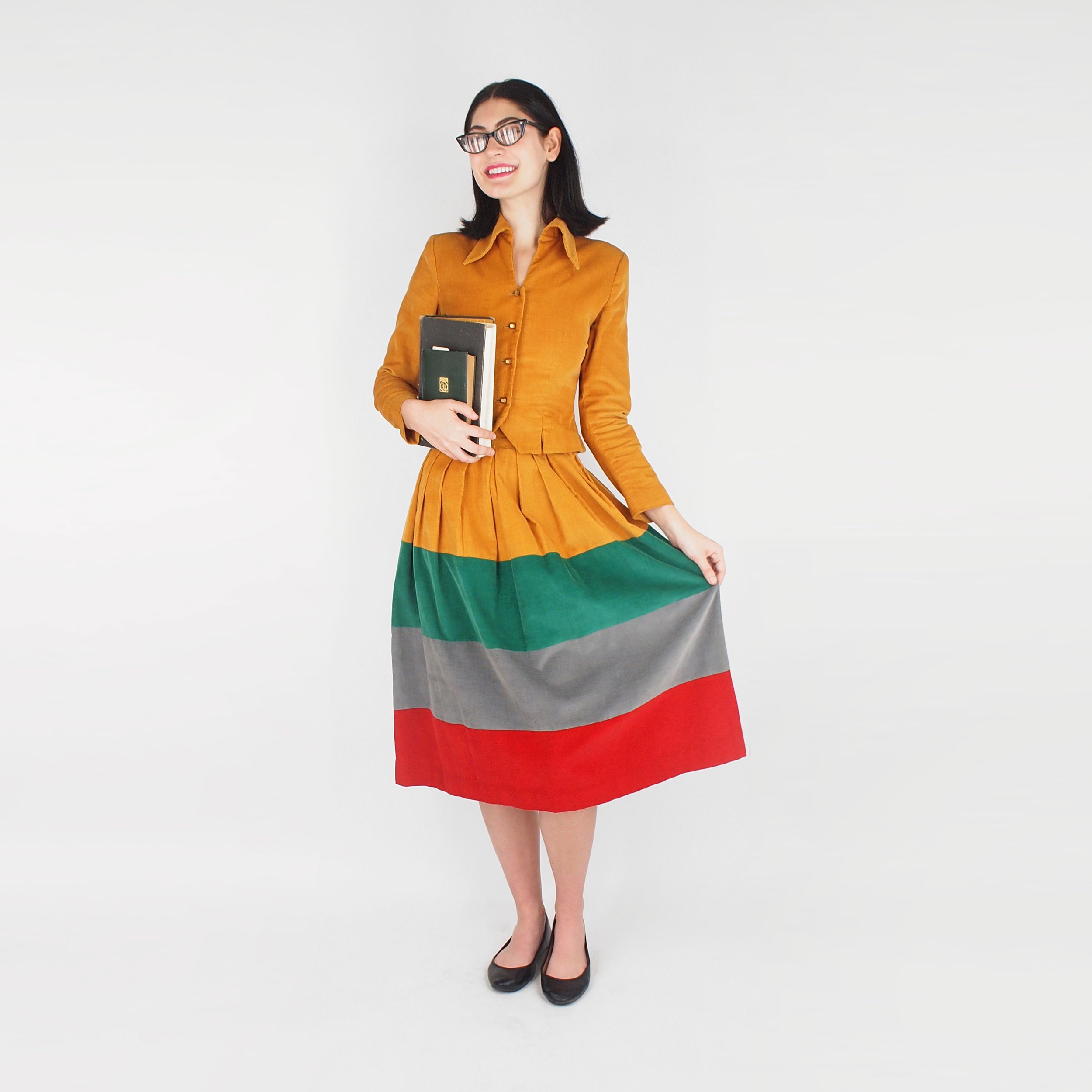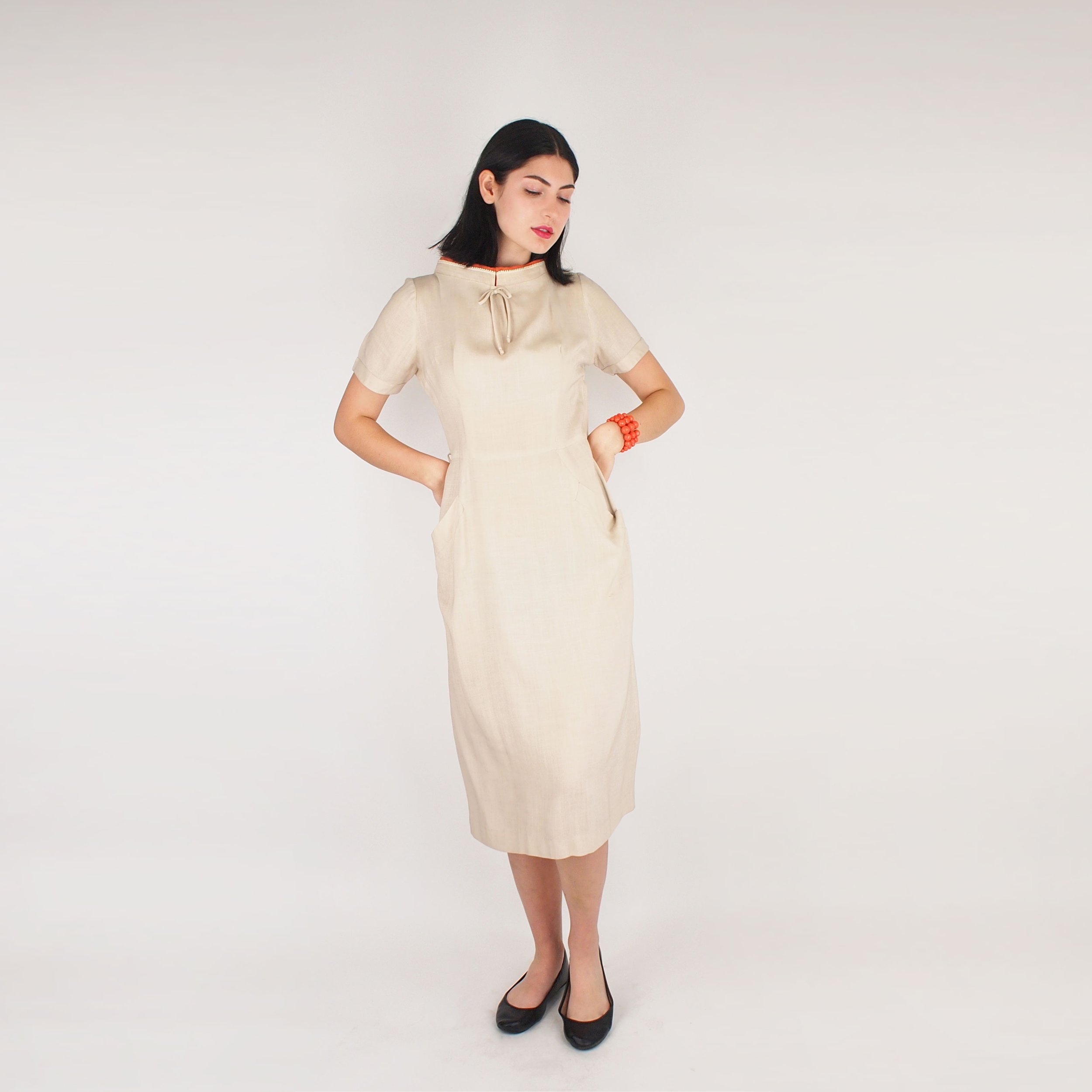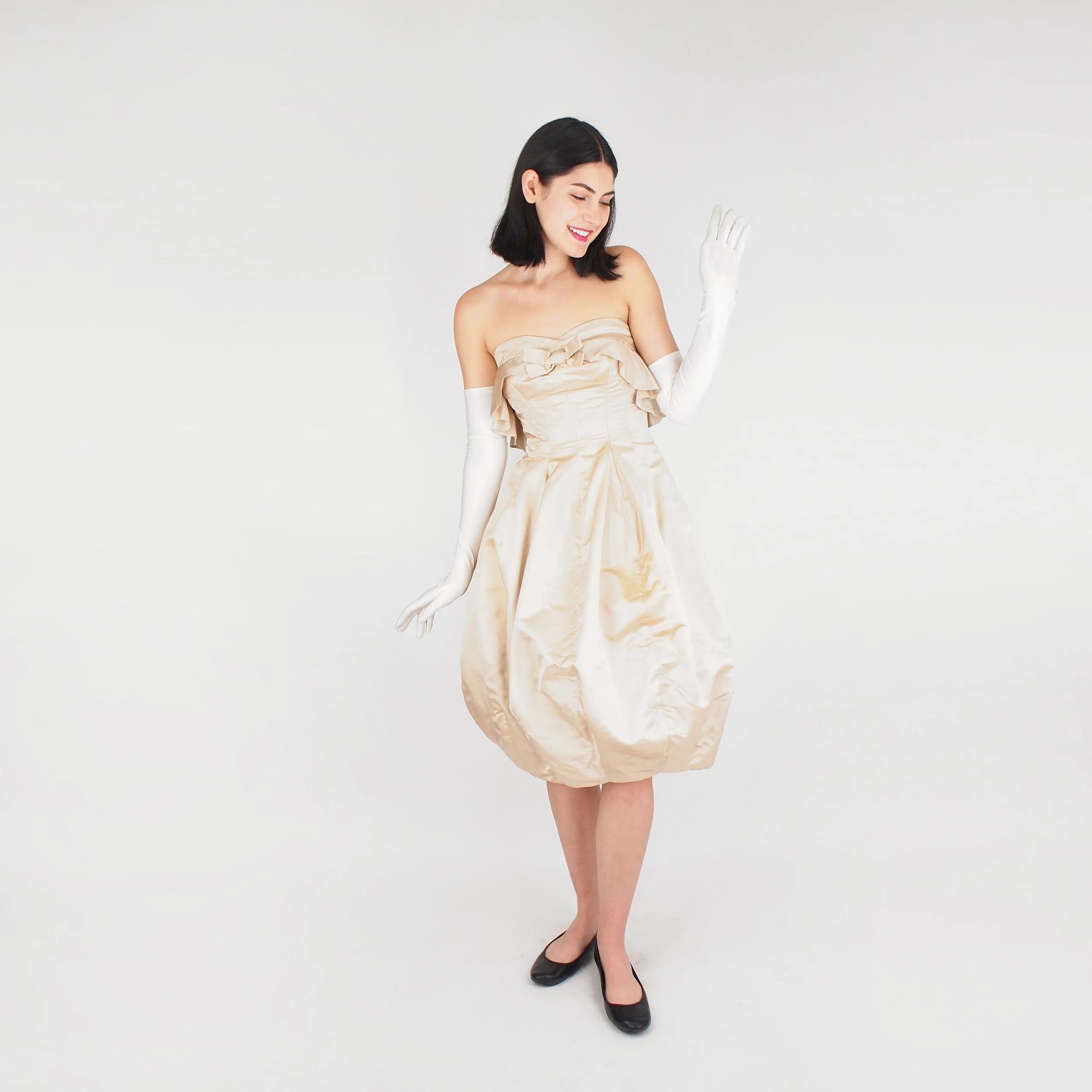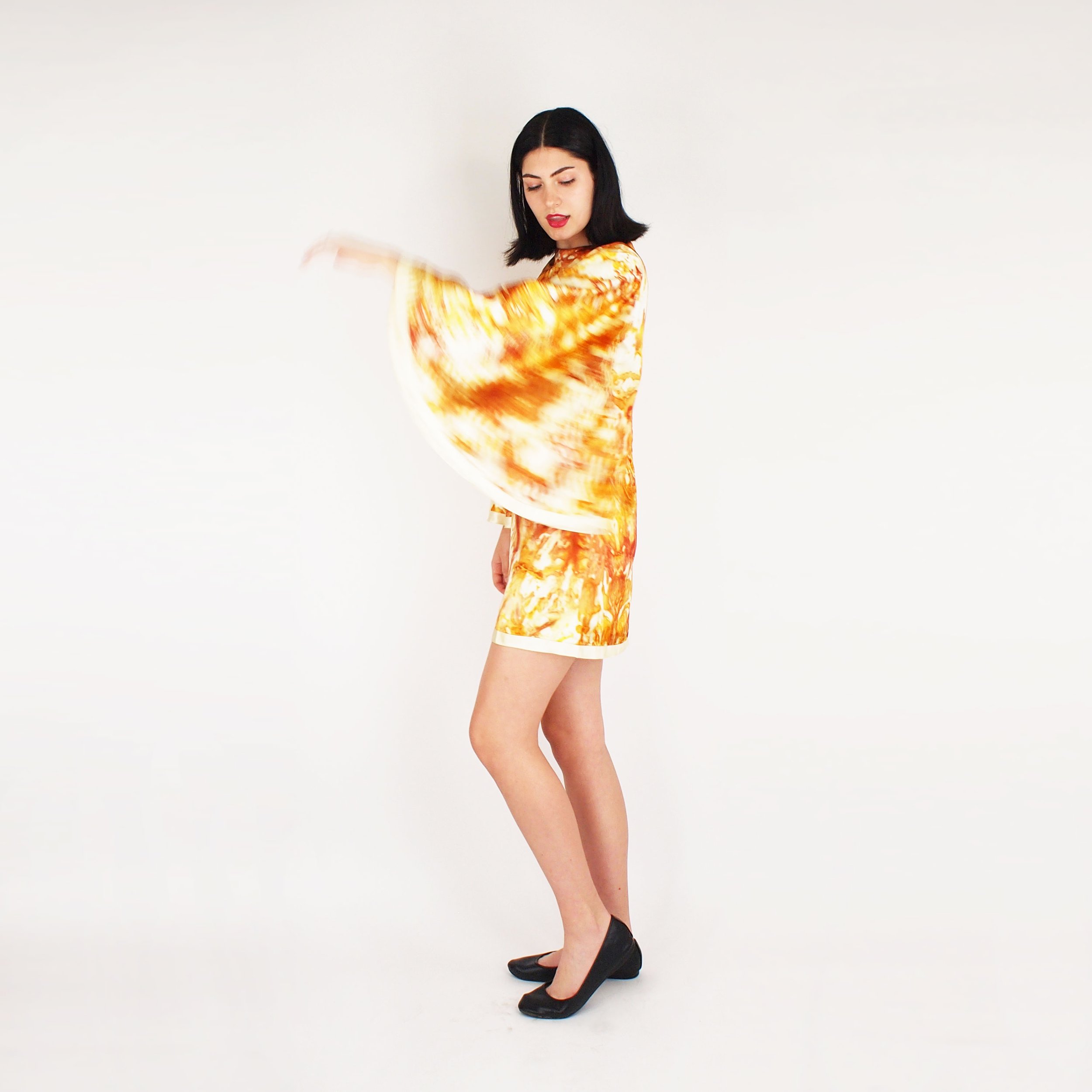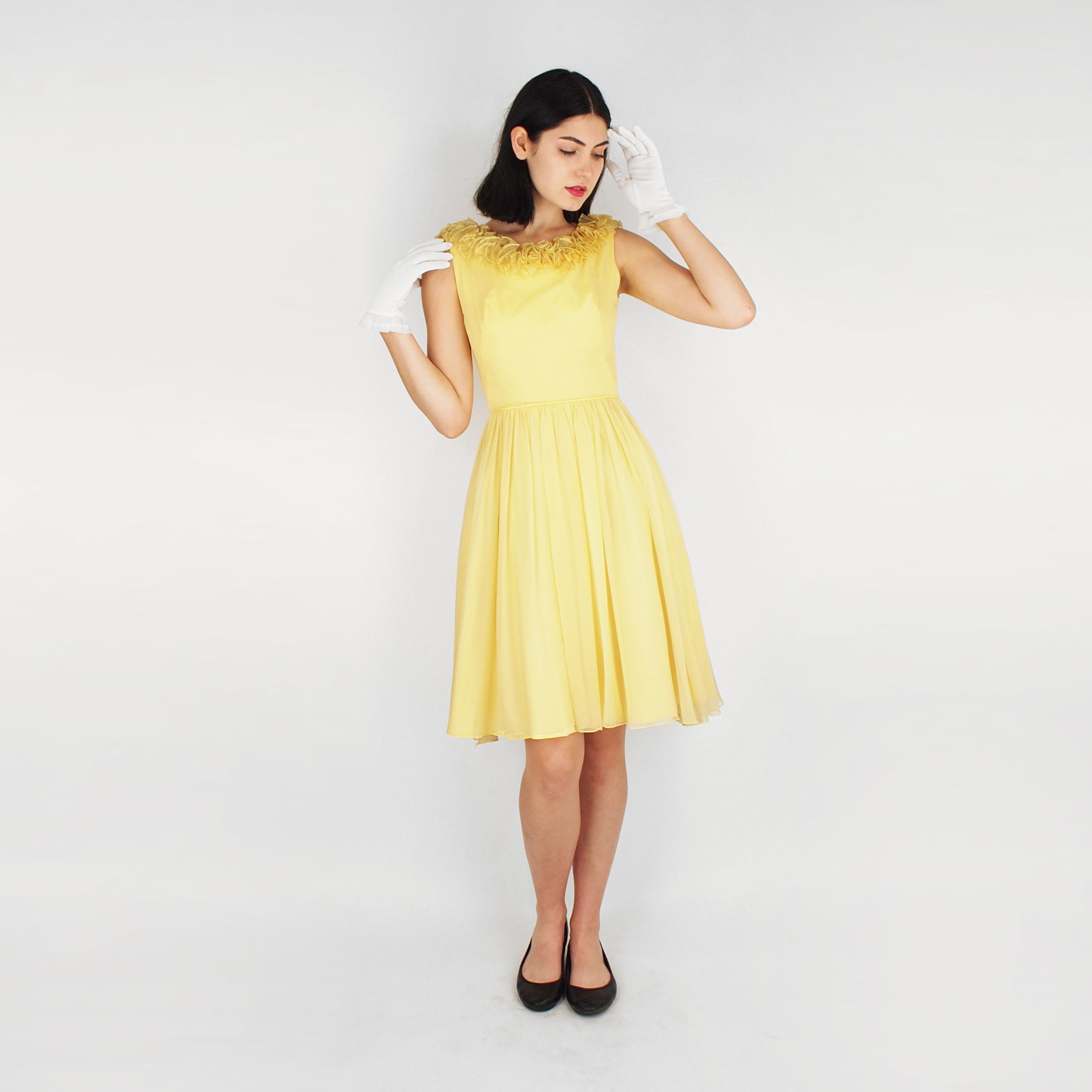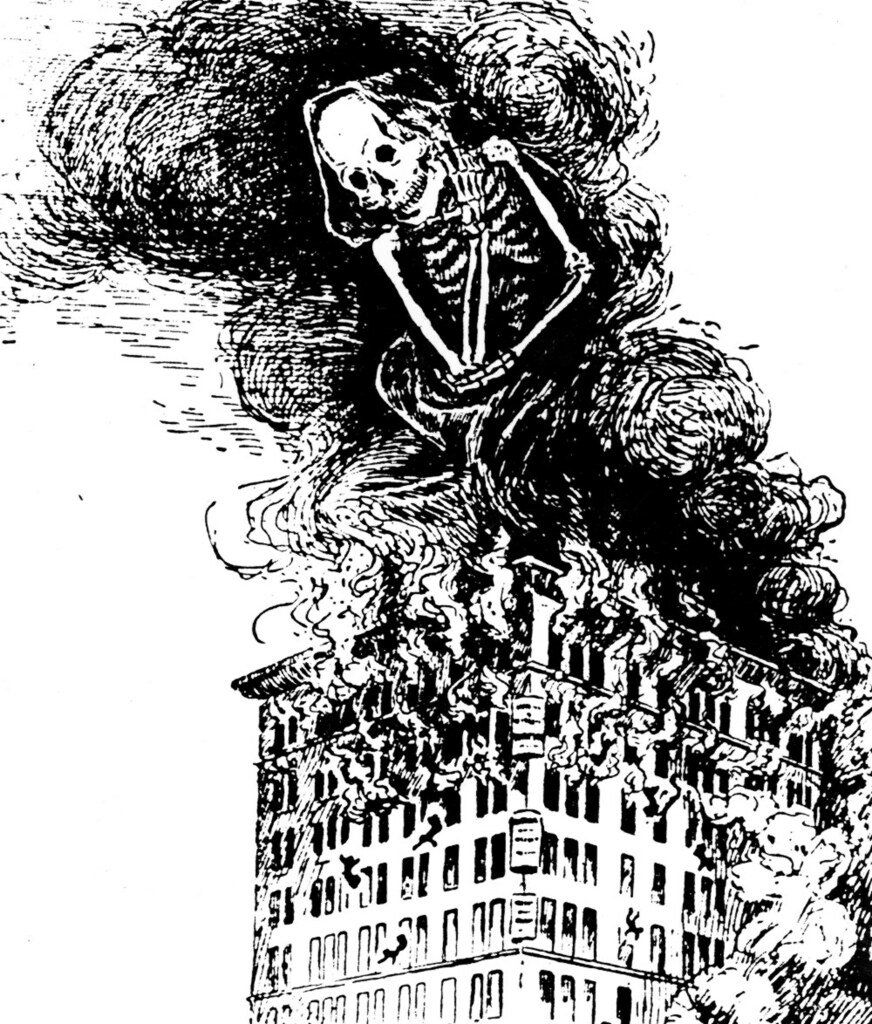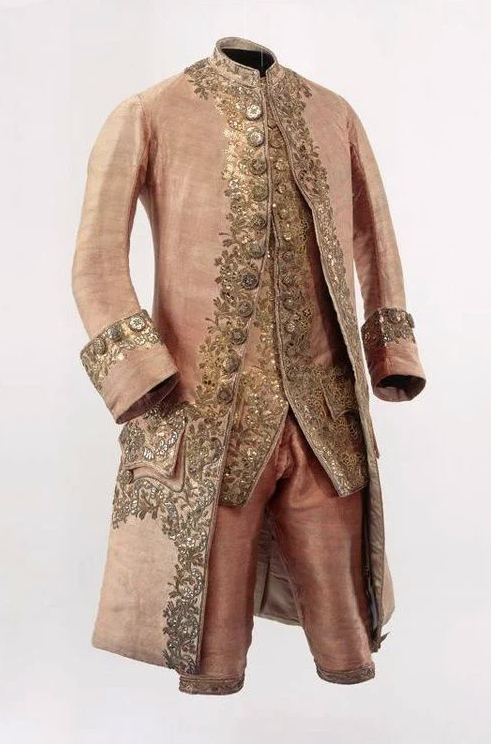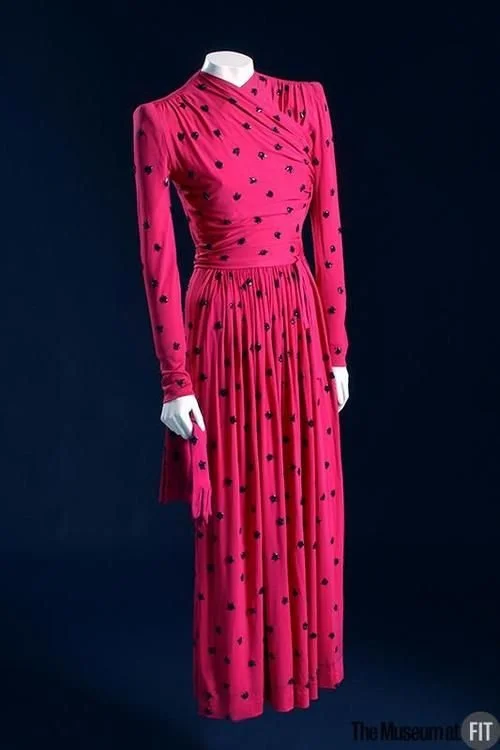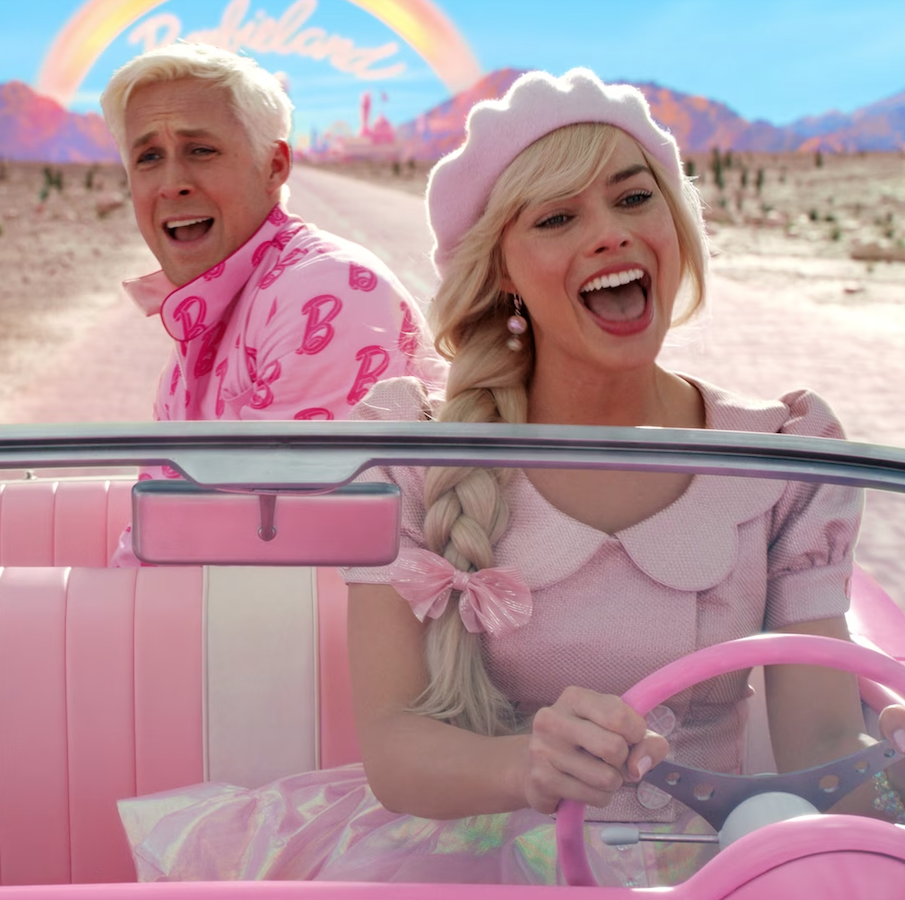The Vintage Fashion Guild (of which I am serving as Vice President) recently received a request for tips on decorating using vintage items in a modern setting. We puzzled over this, thinking that the inquiry was about vintage interior decorating items. However, when the writer clarified that she was interested in our tips as long as they involved styling an interior, I dug into the compelling challenge!
May I have a show of hands… The glove cabinet of VFG member lkranieri
I asked fellow VFG members for their ideas and photos, and I found out our members have some intriguing and stylish homes! Here are the ideas I proposed for decorating using vintage fashion items, in many cases illustrated by my colleagues.
For the sentimentalist: Many have family history in the form of clothing and accessories. These are so often tucked away and forgotten. Instead of simply framing a photo of someone you want to remember, consider protecting and preserving more of their story in a shadowbox frame. Frame a baptismal gown and baby photos, or a necklace, gloves and lace handkerchief with a photo of the loved one who used the items.
Baby clothes in a box frame, via Michelle Dally Cunningham/Dallysisters on Etsy
VFG member Distant Details framed her husband’s childhood Superman cape
For the mid-century kitsch lover: You can use cheerful vintage aprons across a line to curtain your kitchen or breakfast nook. The half aprons that once were ubiquitous often represent DIY in the most charming way, with mid-century prints, interesting trims and extras like ruffles and embroidery.
Vintage aprons available from VFG Members TheSpectrum, Ranch Queen Vintage and The Vintage Merchant
A vintage Guatemalan huipil brings its hand-crafted charm to a room in the home of VFG member Amanda in Vermont
For the modernist: Set a tone with a grouping of framed scarves or handkerchiefs. Vintage Vera scarves are particularly artful and many of Vera Neumann’s designs are akin to fine art. In fact, you can set a tone to suit almost any style with the right garment on display.
This is the “Pursemas Tree” of VFG Member The Vintage Purse Museum
For the collector: Some highlight their vintage fashion item collections by displaying them decoratively. After all, anything in groups becomes more interesting. Try lighting behind Lucite purses on a glass shelf in a modern interior. Especially if carved or with encased confetti, the Lucite will glow and sparkle.
Framed vintage fashion images on the walls of VFG members Linn’s Collection (left) and Vintagiality (right)
For the romantic: It’s not hard to love old dress forms and hat-display mannequin heads or hands. You can display a beautiful vintage hat on a vintage head mannequin or hat stand for an air of romance. (If you are more the fun-loving type, there are vintage mannequin parts—think leg upside down in an umbrella stand!)
1950s mannequin with antique dress; 1930s head form as part of display. Both photos courtesy of VFG member Another Time Vintage Apparel.
VFG member The Spectrum has an eclectic mix of beloved vintage items on display.
For the prepster: Vintage swimwear in primary colors framed in white would give a sporty look to a beach cottage.
This collection of items, including a blazer with pocket square and oxford button down shirt, gives an old-school preppy vibe. Royalty-free image from PickPik
The “Hat Department” corner in the home of VFG member DollsnTrolls displaying some of her partner’s country/rockabilly collection.
For the Western lover: A line up of perfectly worn vintage cowboy boots, cowboy hats and maybe a spur or two? Yee-haw!
Shoe display (another alternate Christmas tree) of VFG member Fashion History Museum
For the girly-girl: A display of colorful vintage shoes make great bedroom decor.
For the practical: To make a useful and beautiful display you can pin brooches on a cloth-covered dress form or some other soft decorative item. Looks good and it’s easy to see and select what you will wear. You can cover a wall with handbags that you can select for use, or fill an emptied chocolate box with jewelry, using individual paper cups (like the chocolate was in). This looks great with a Valentine heart-shaped box!
A wall of vintage bags for display and use. Royalty-free image via Pexels.
Vintage hatboxes make useful and beautiful containers in the home of VFG member The Spectrum.
Read the entire article that resulted from my and others’ tips, “Timeless Fusion: How to Blend Vintage and Modern Design According to Experts” by Holly Hooper, on Redfin.
The vintage dresses sign heads up an eclectic collection in the home of VFG member Northstar Vintage.
A caveat for display of vintage clothing and accessories: Keep in mind that vintage fashion items, to one degree or another, are ephemeral. To preserve the pieces on display, you will want to protect them from harsh conditions, including moisture, big temperature swings, direct sunlight, dust, and critters. Keep the items clean and be sure anything delicate (think beaded silk flapper dress) is not strained on a hanger.
